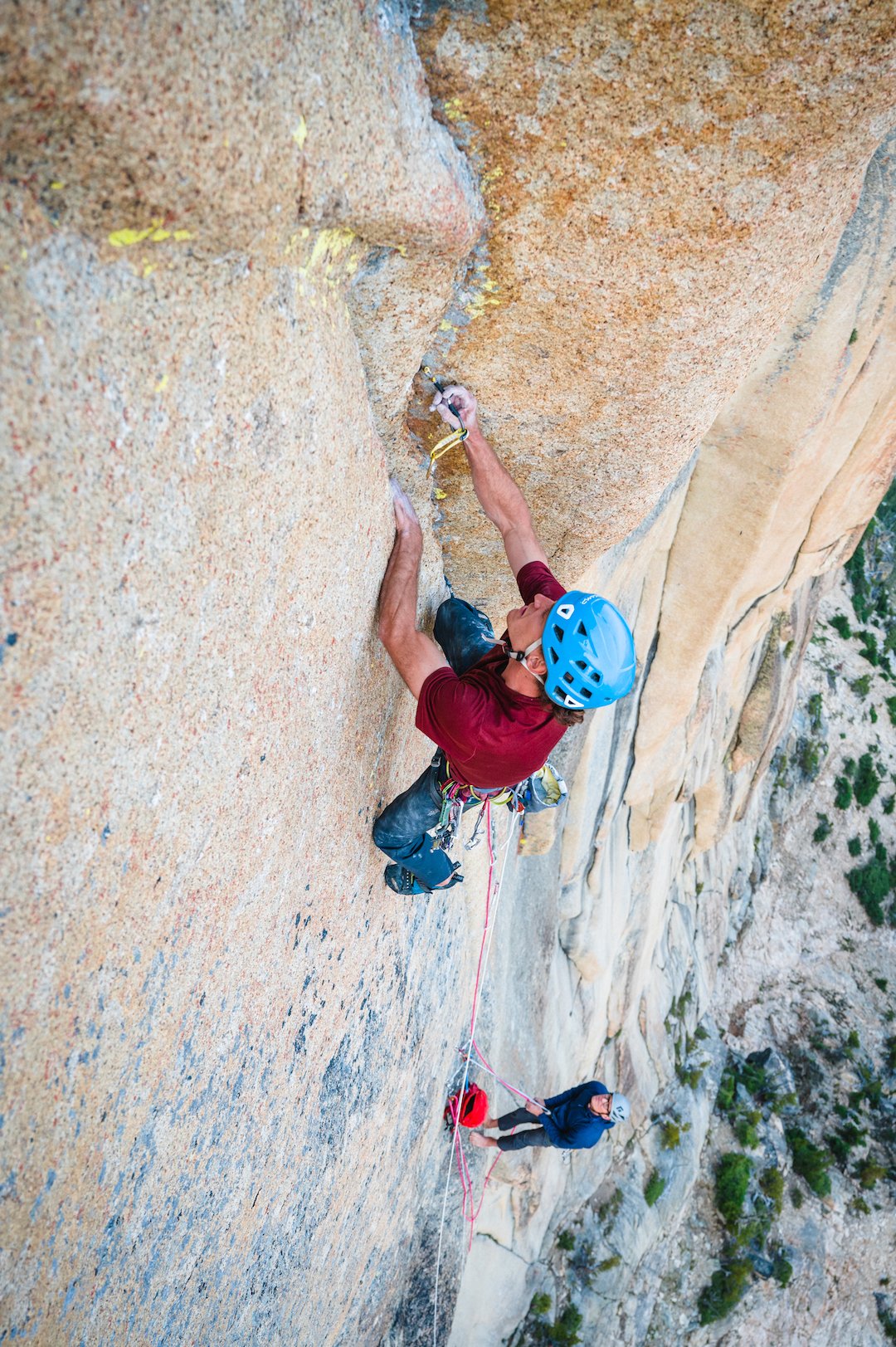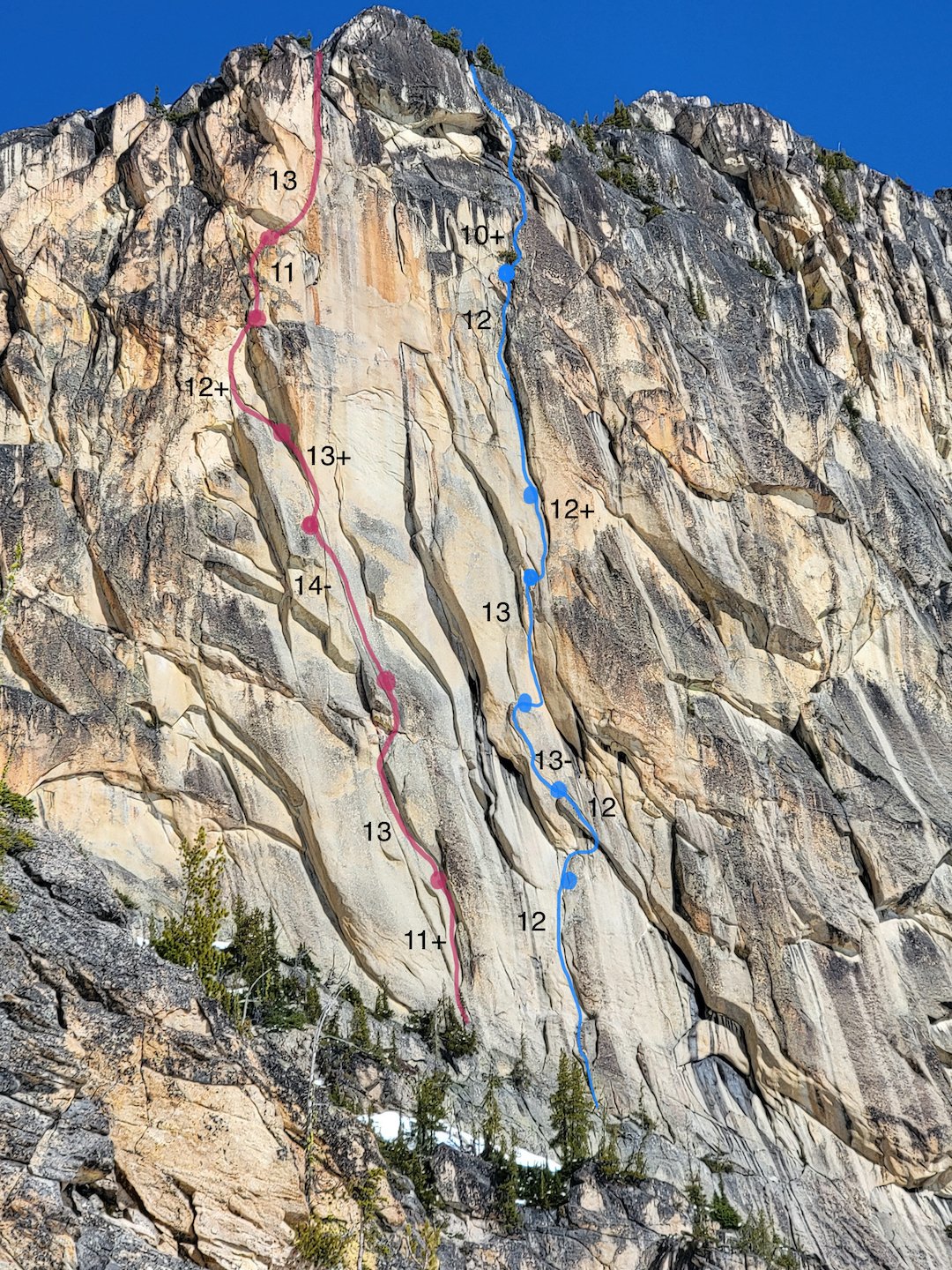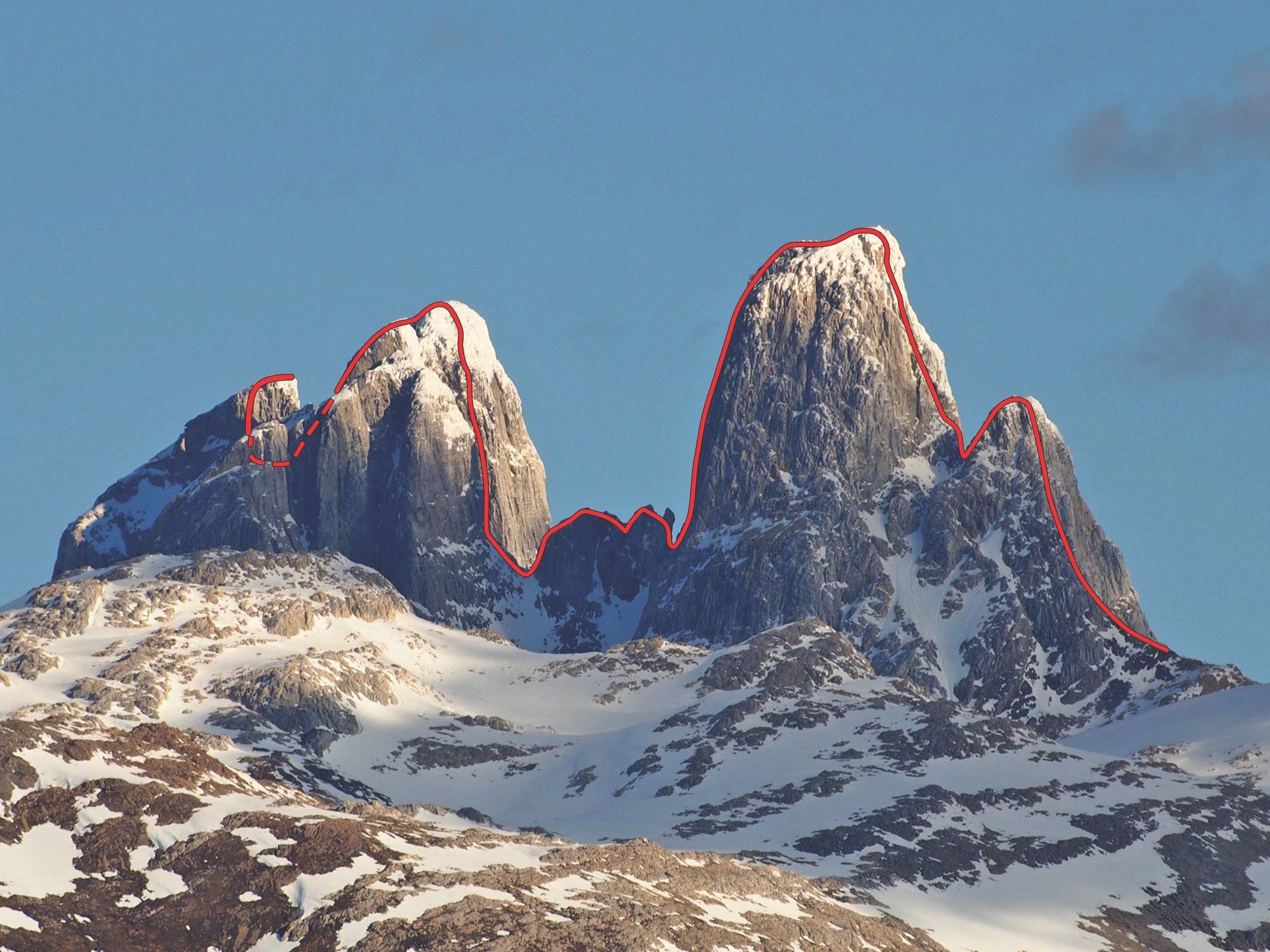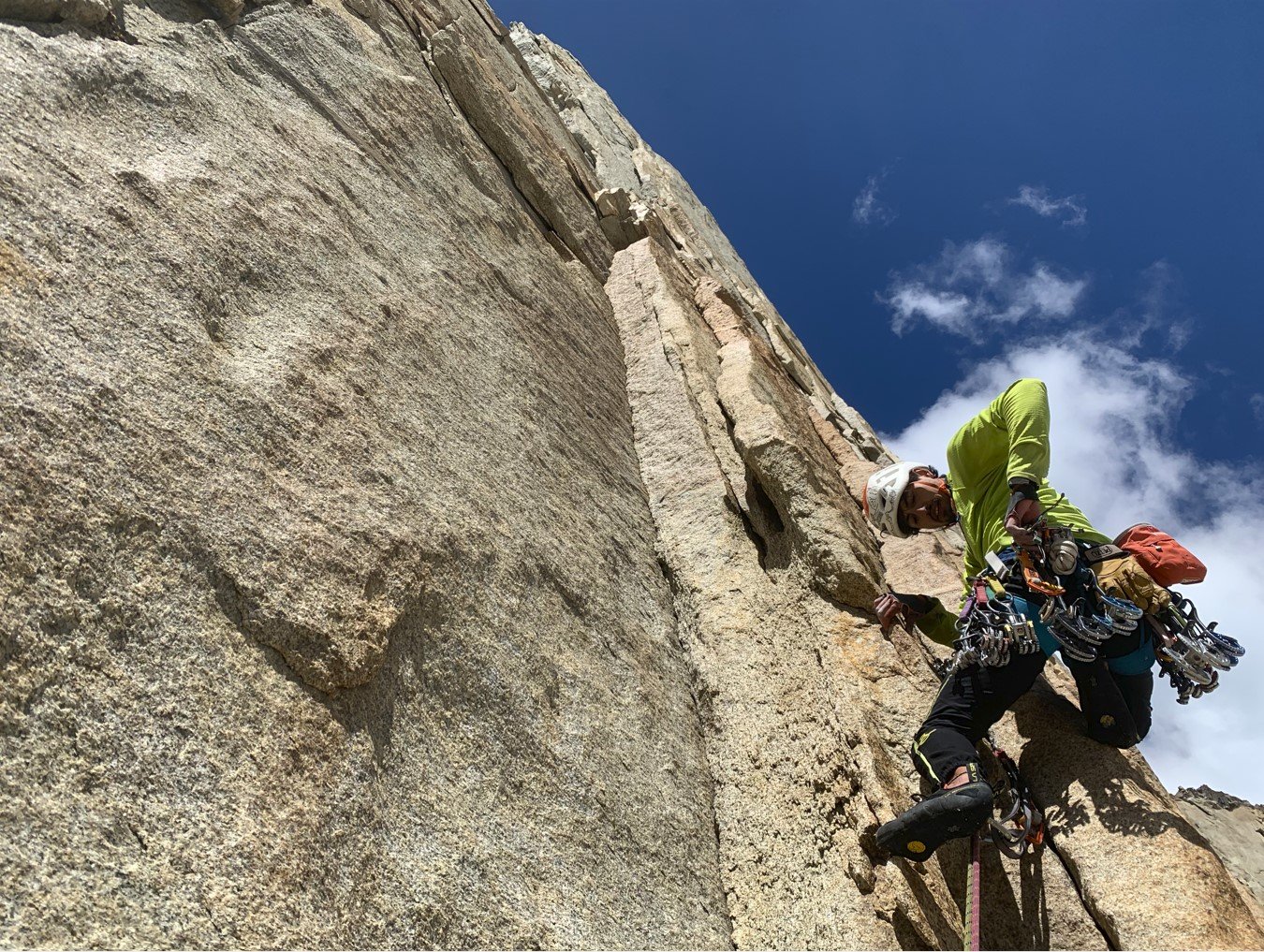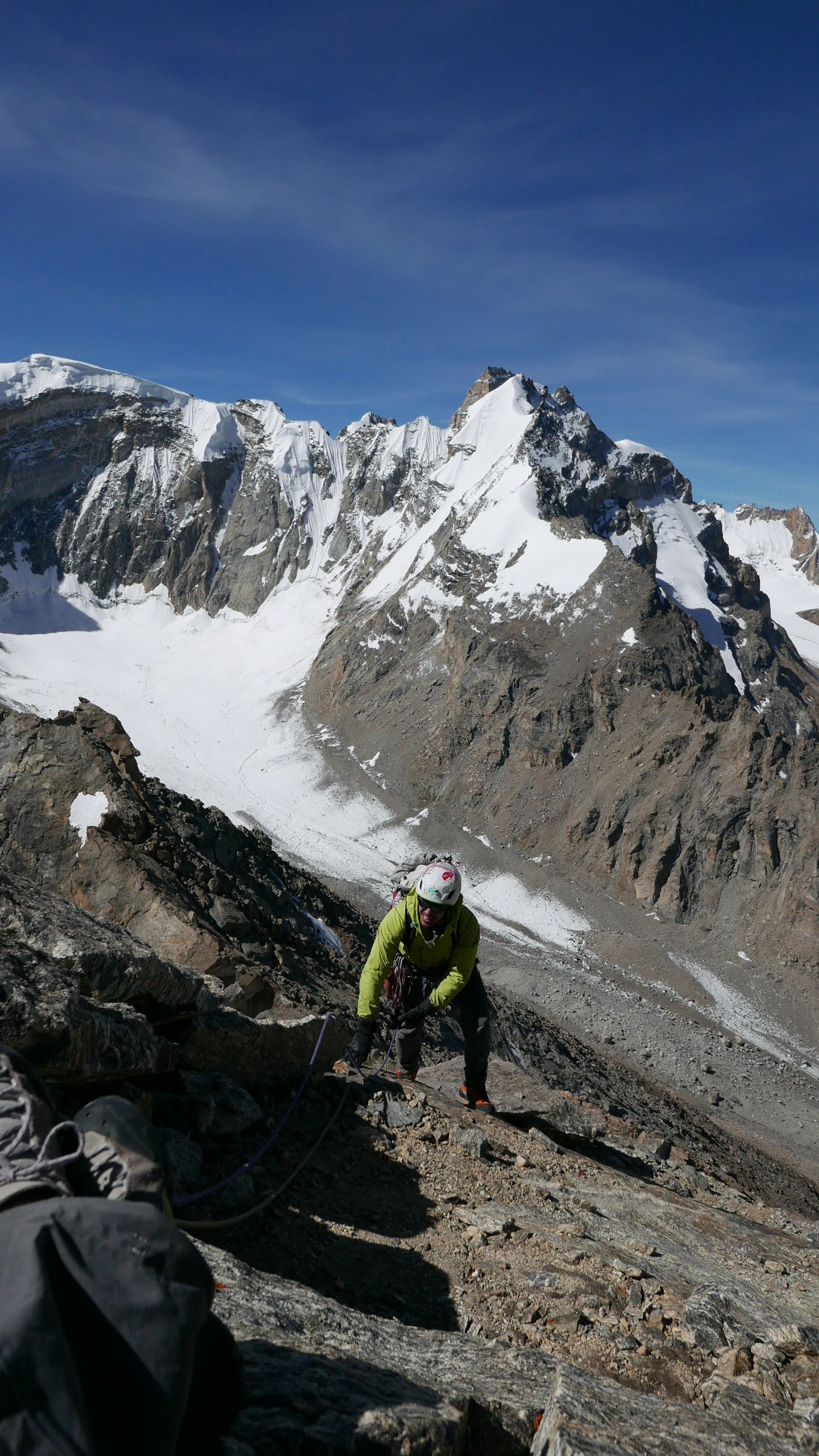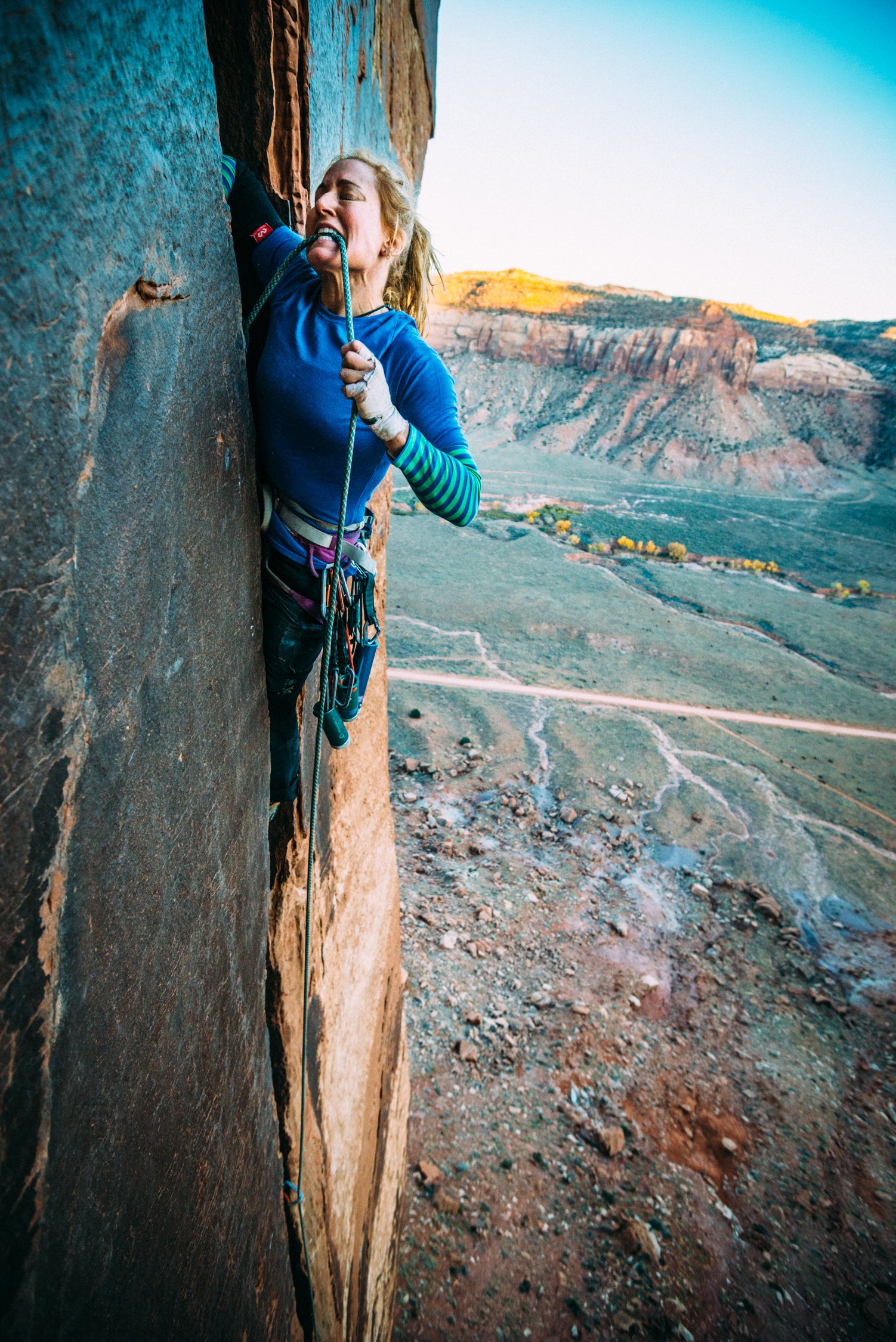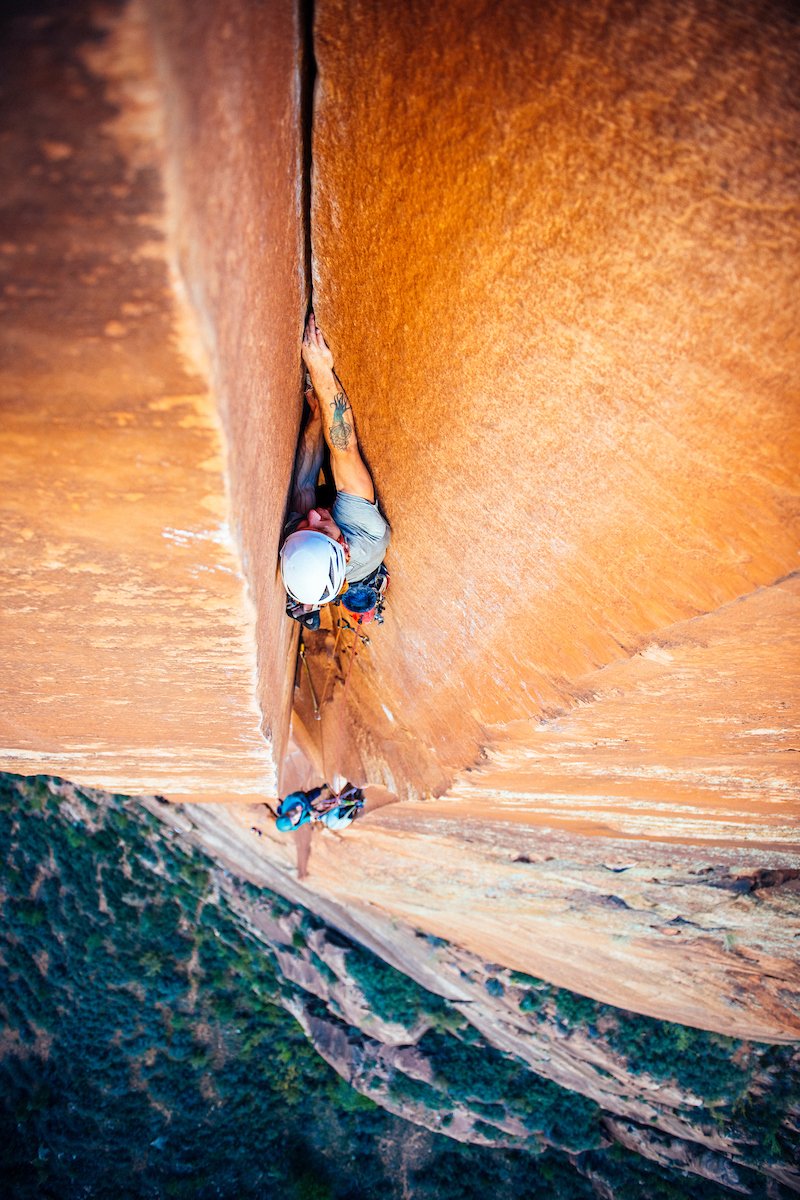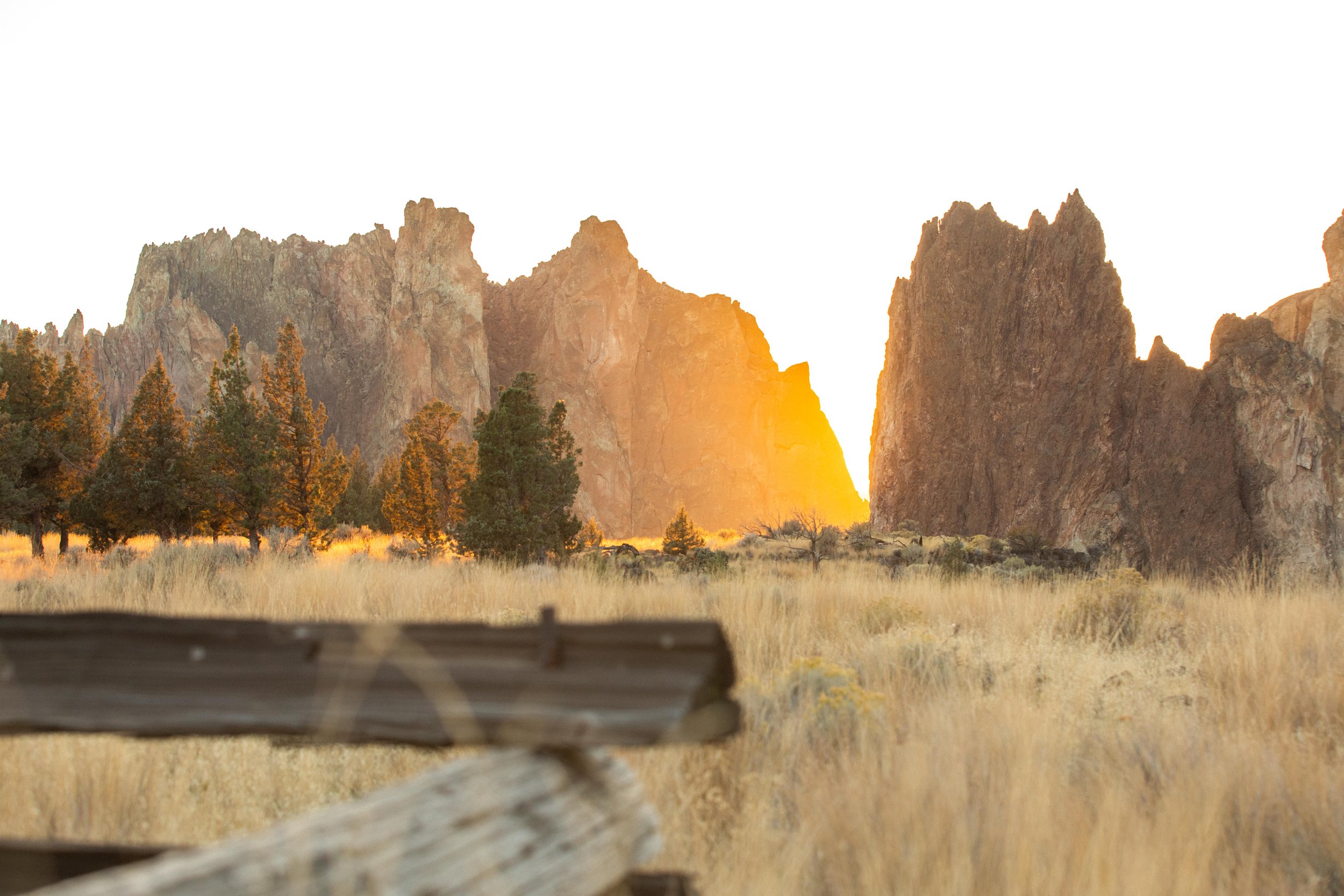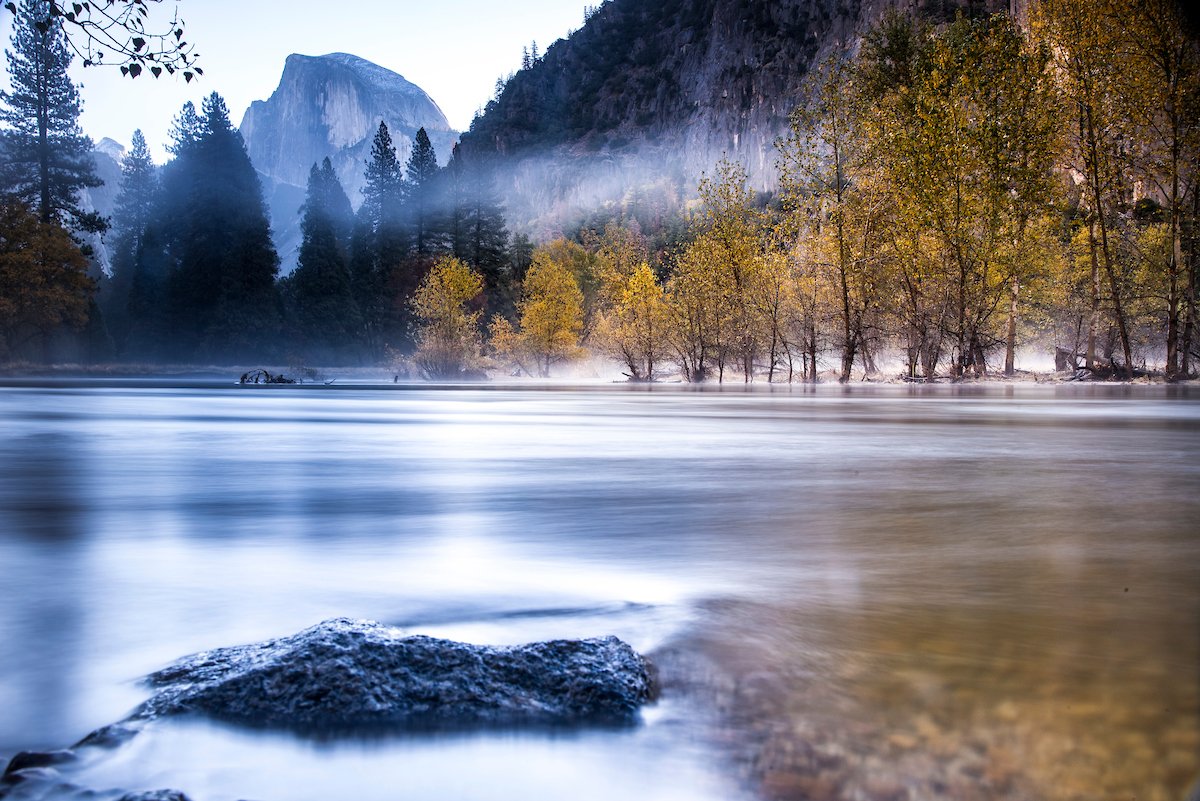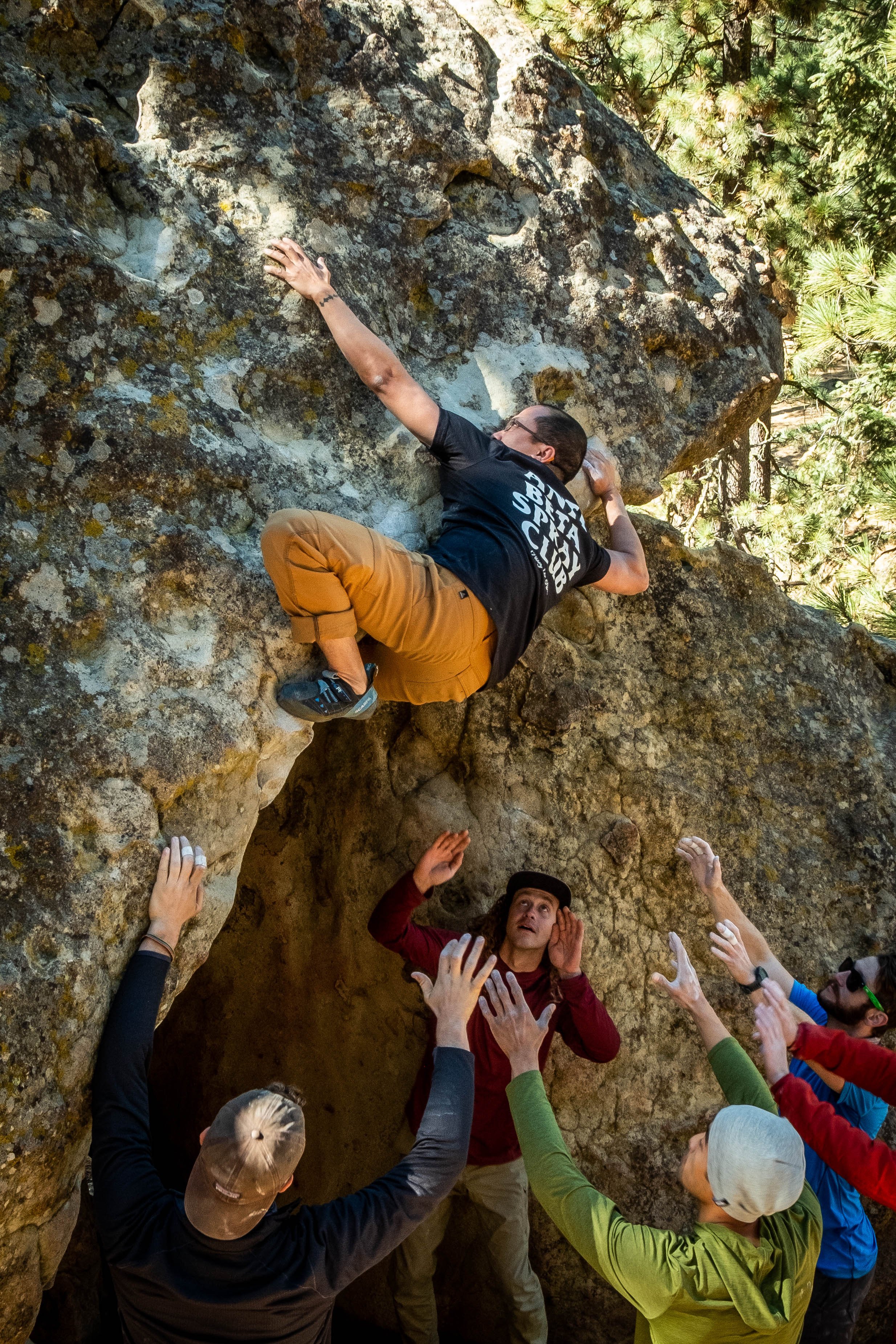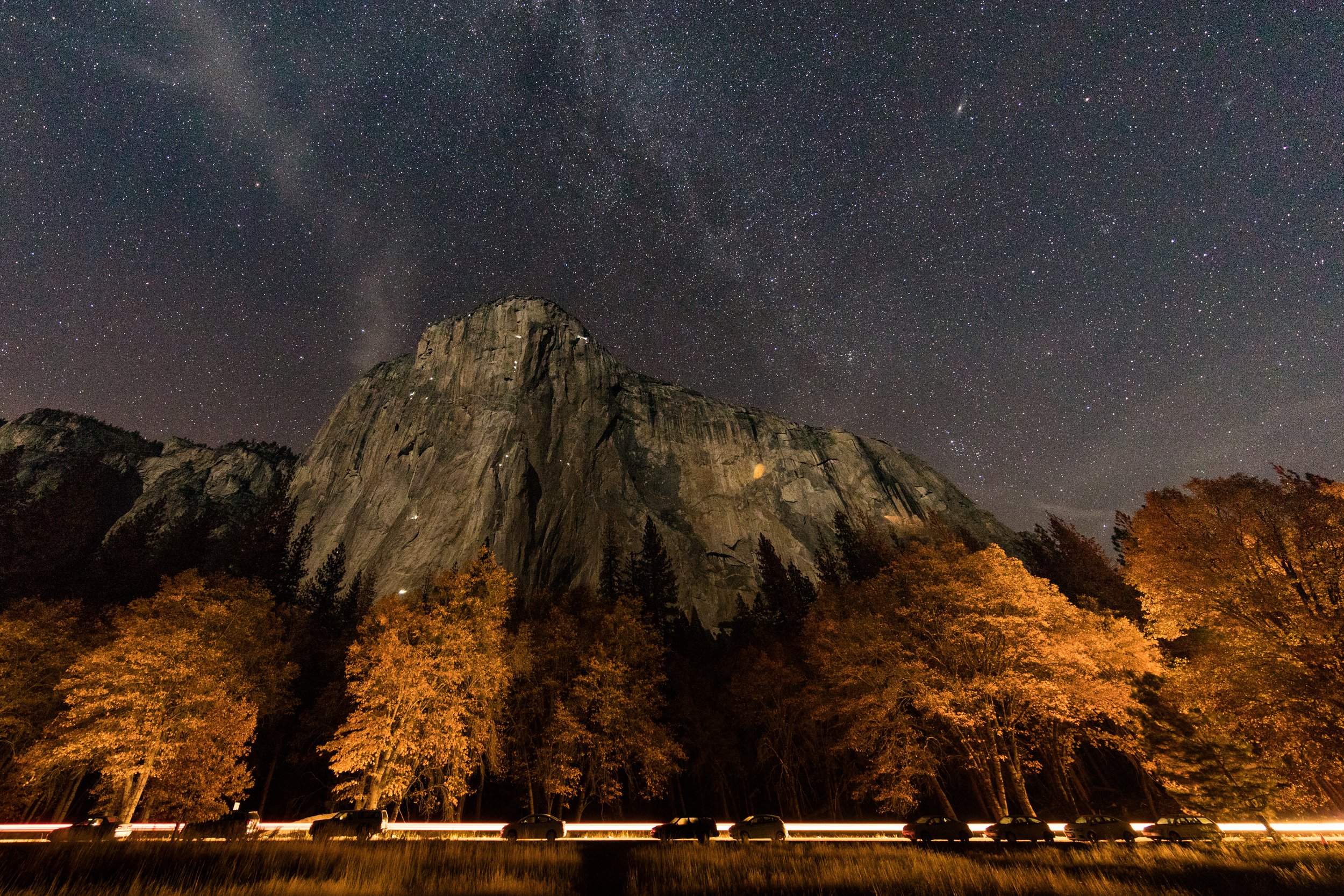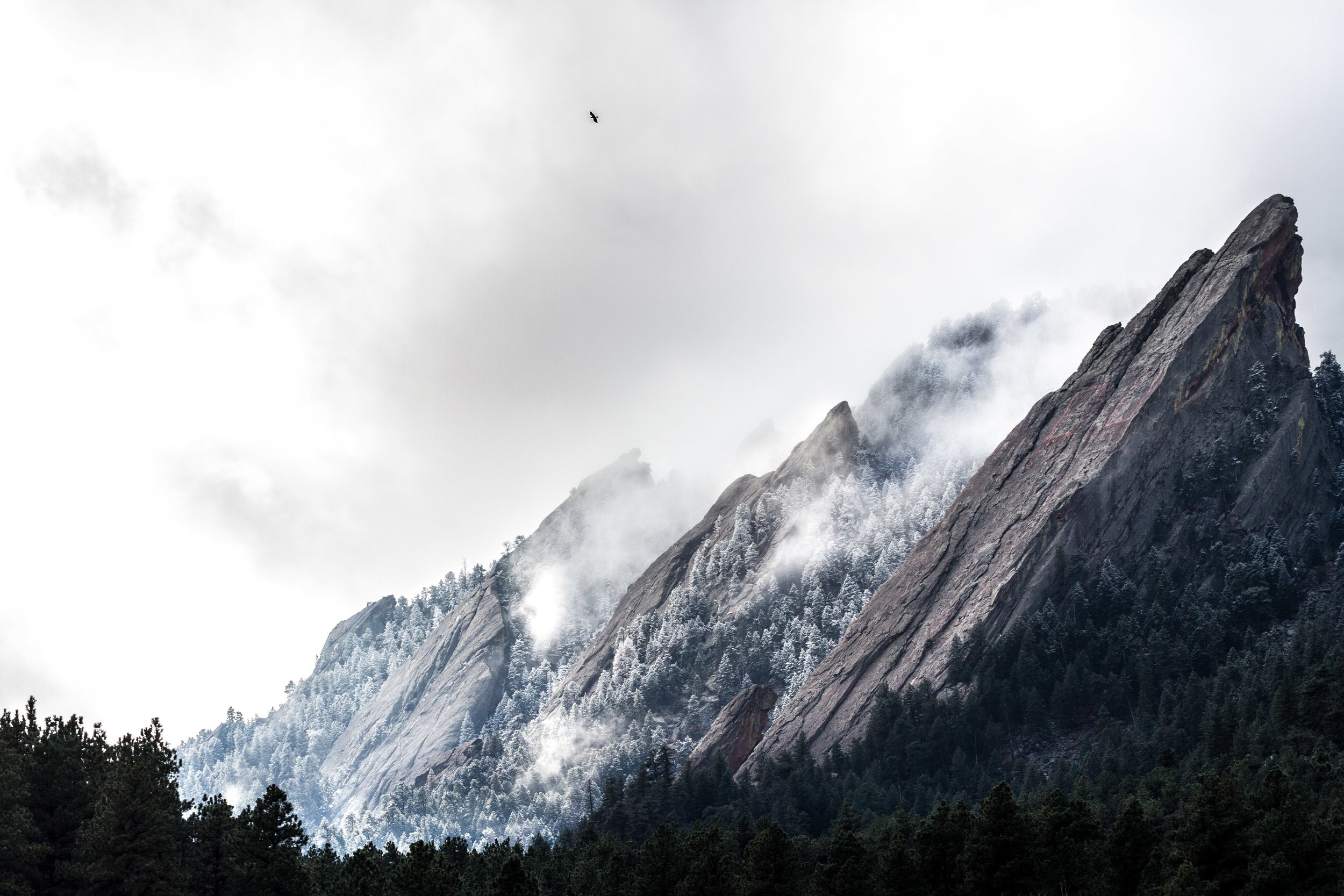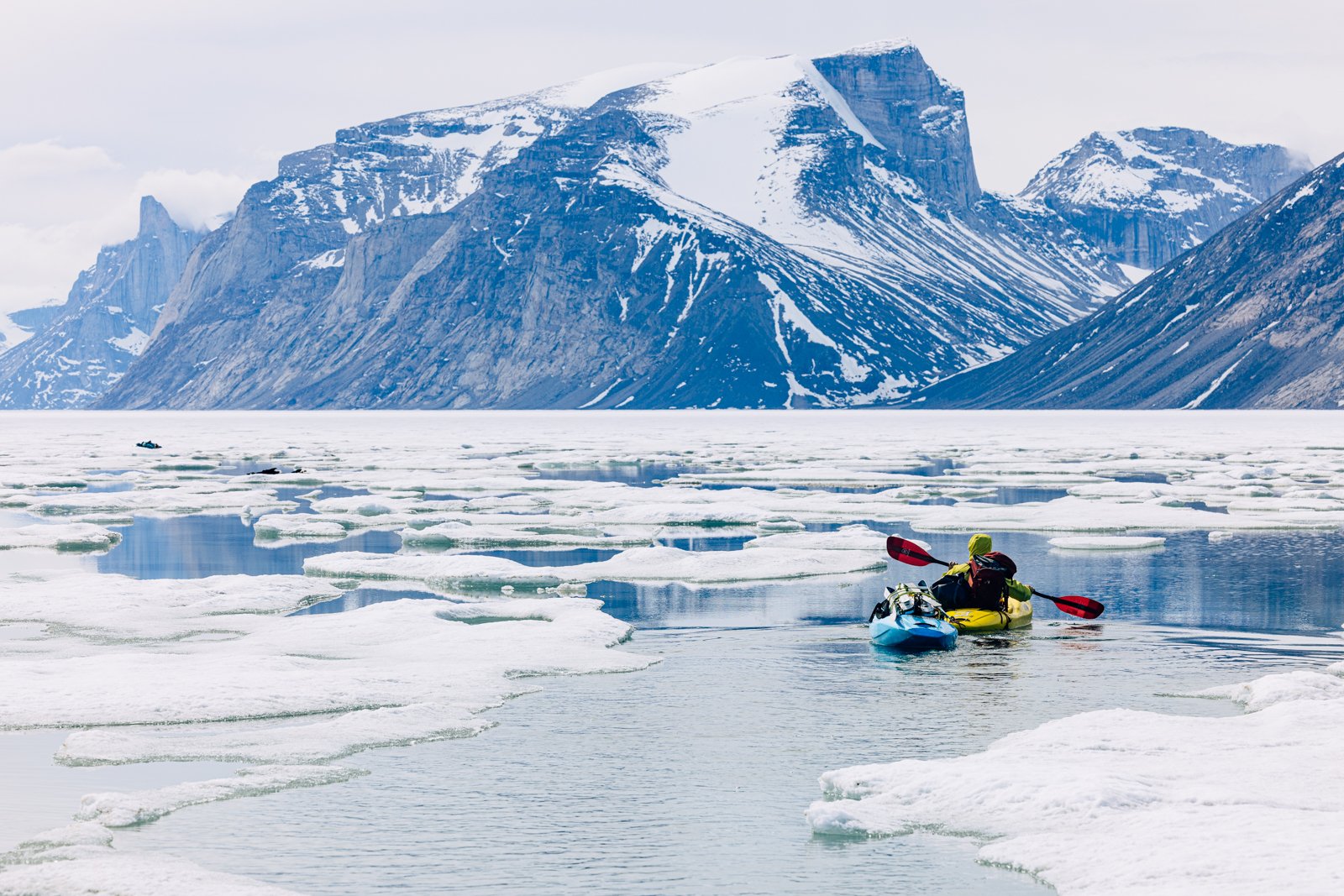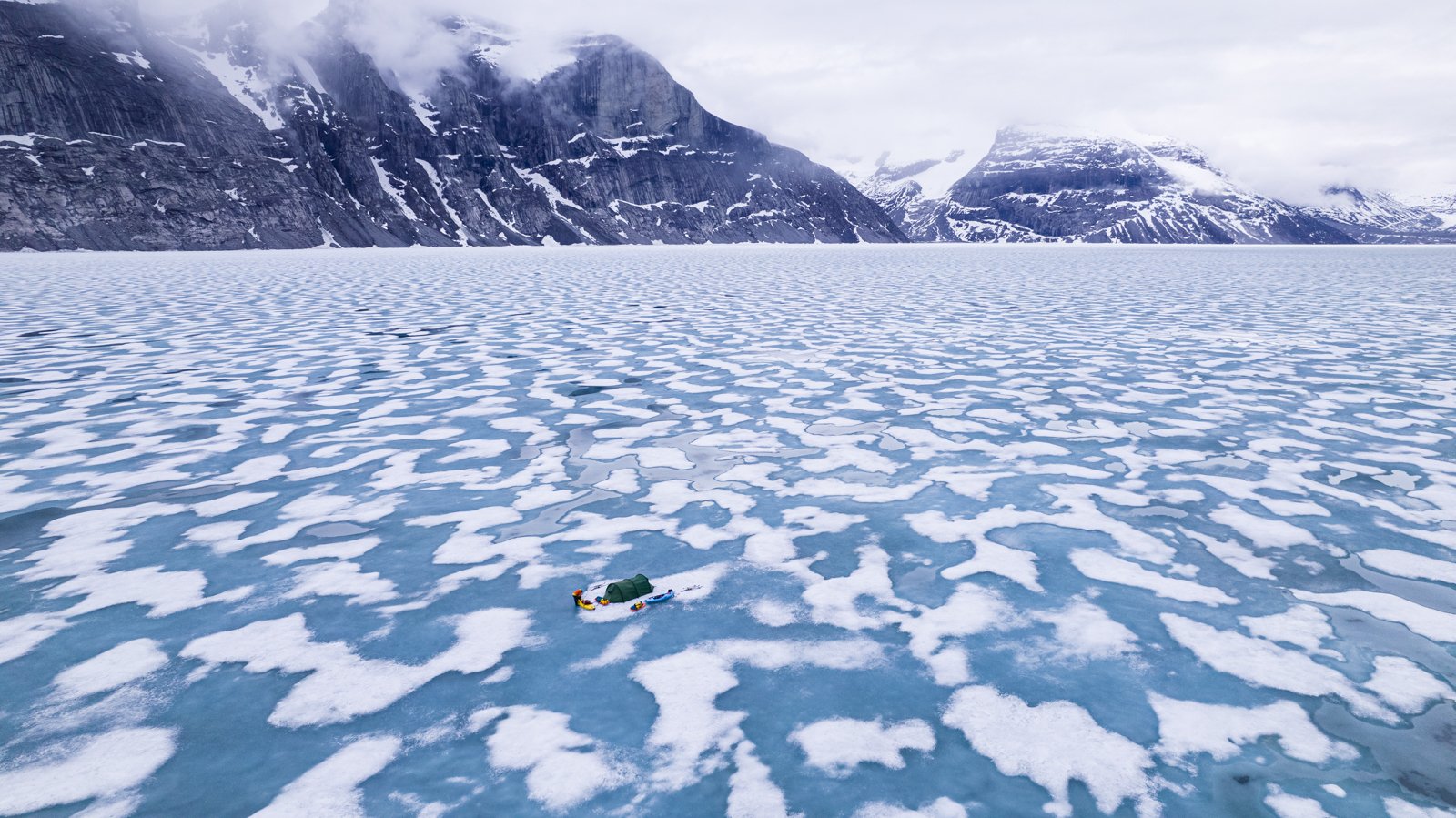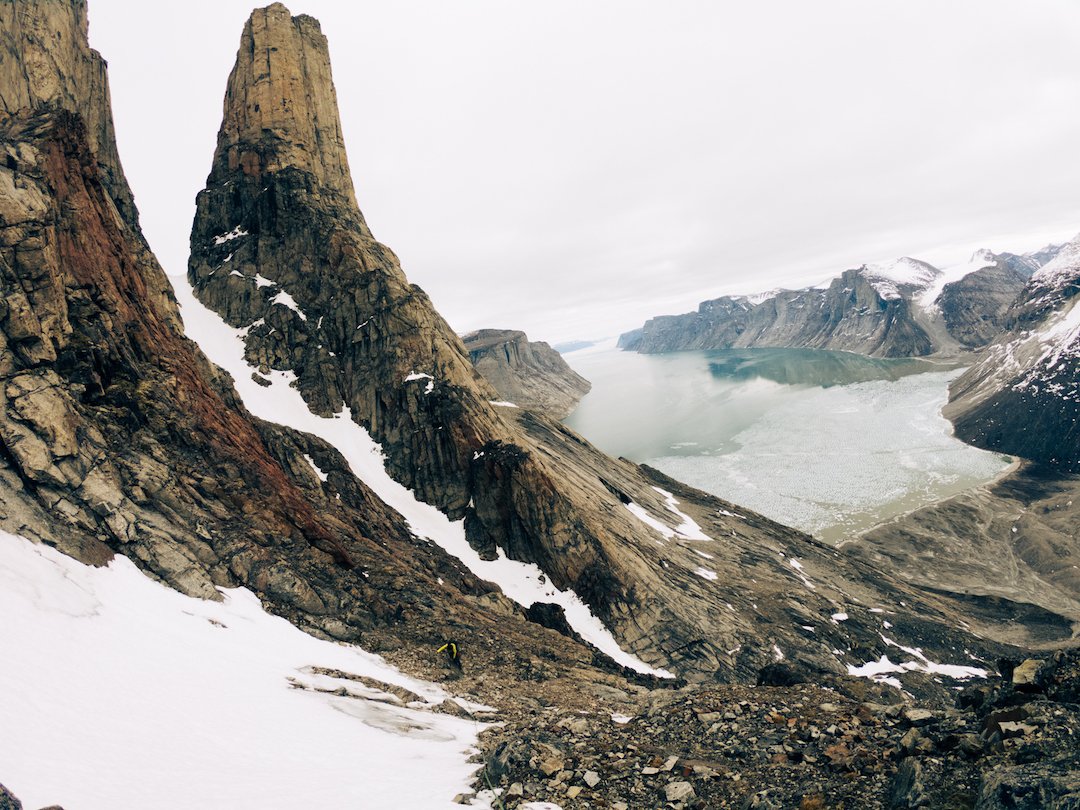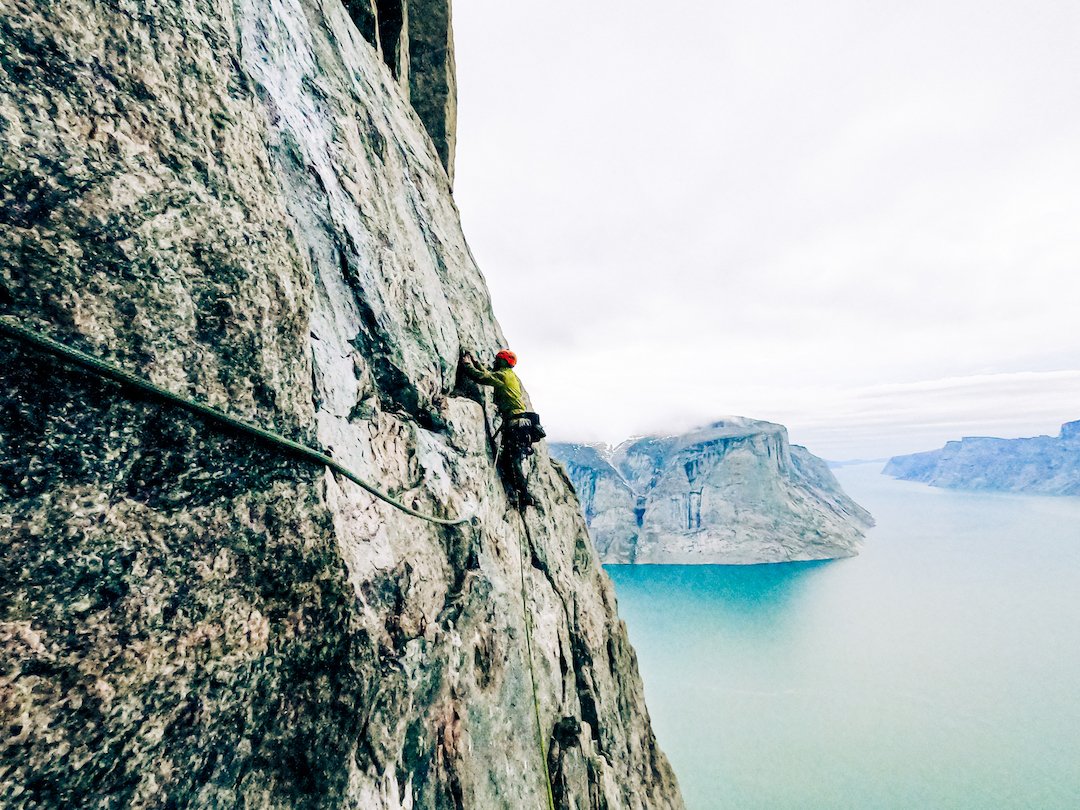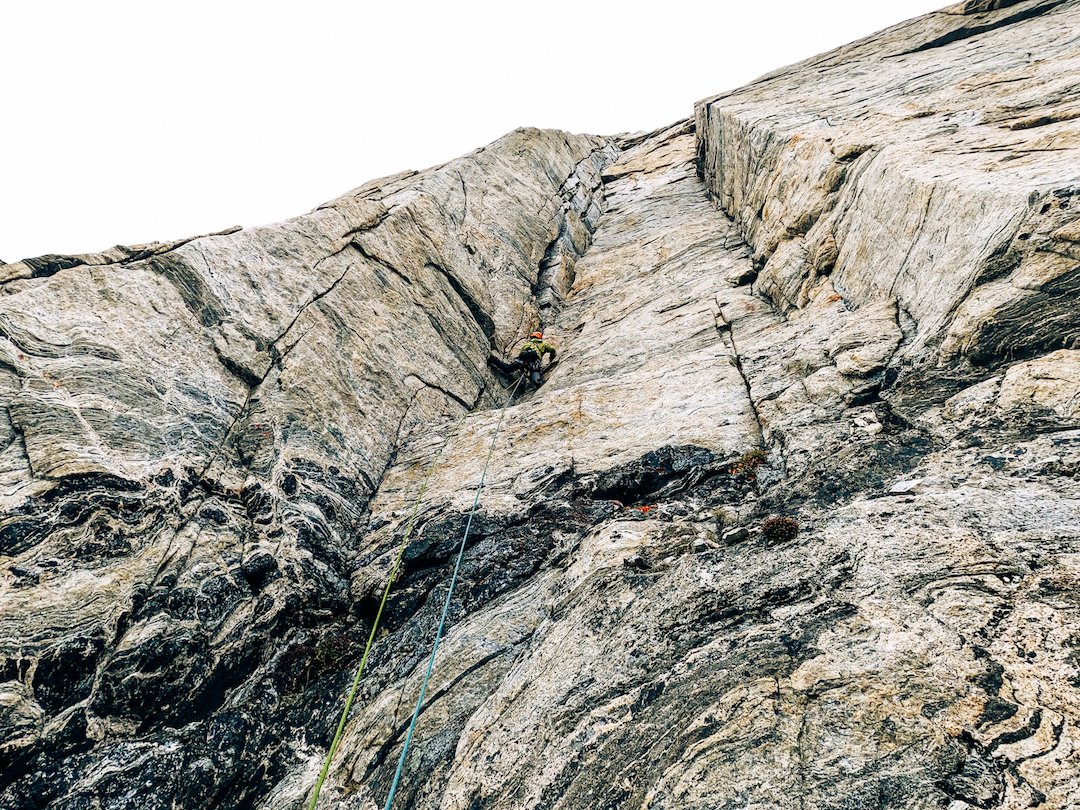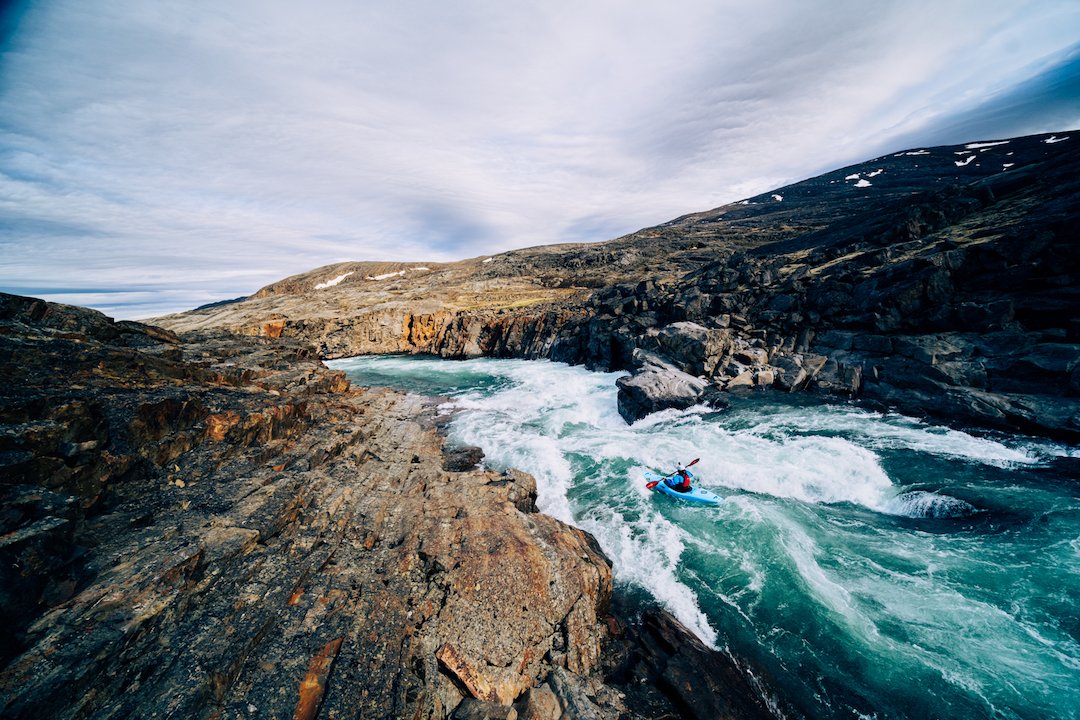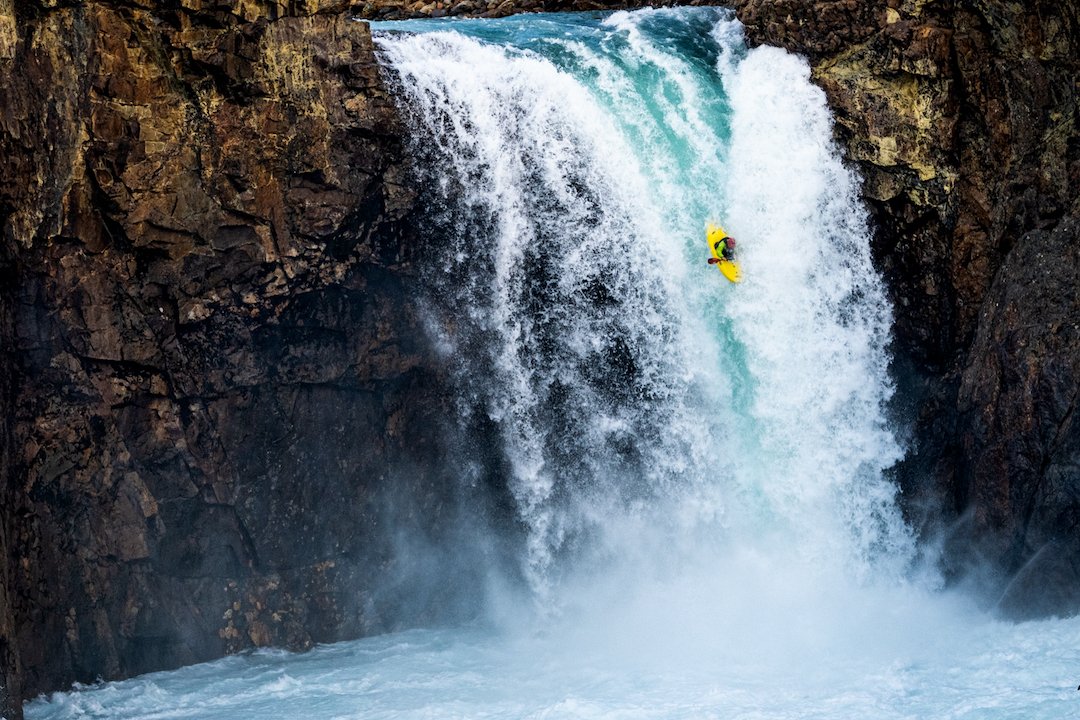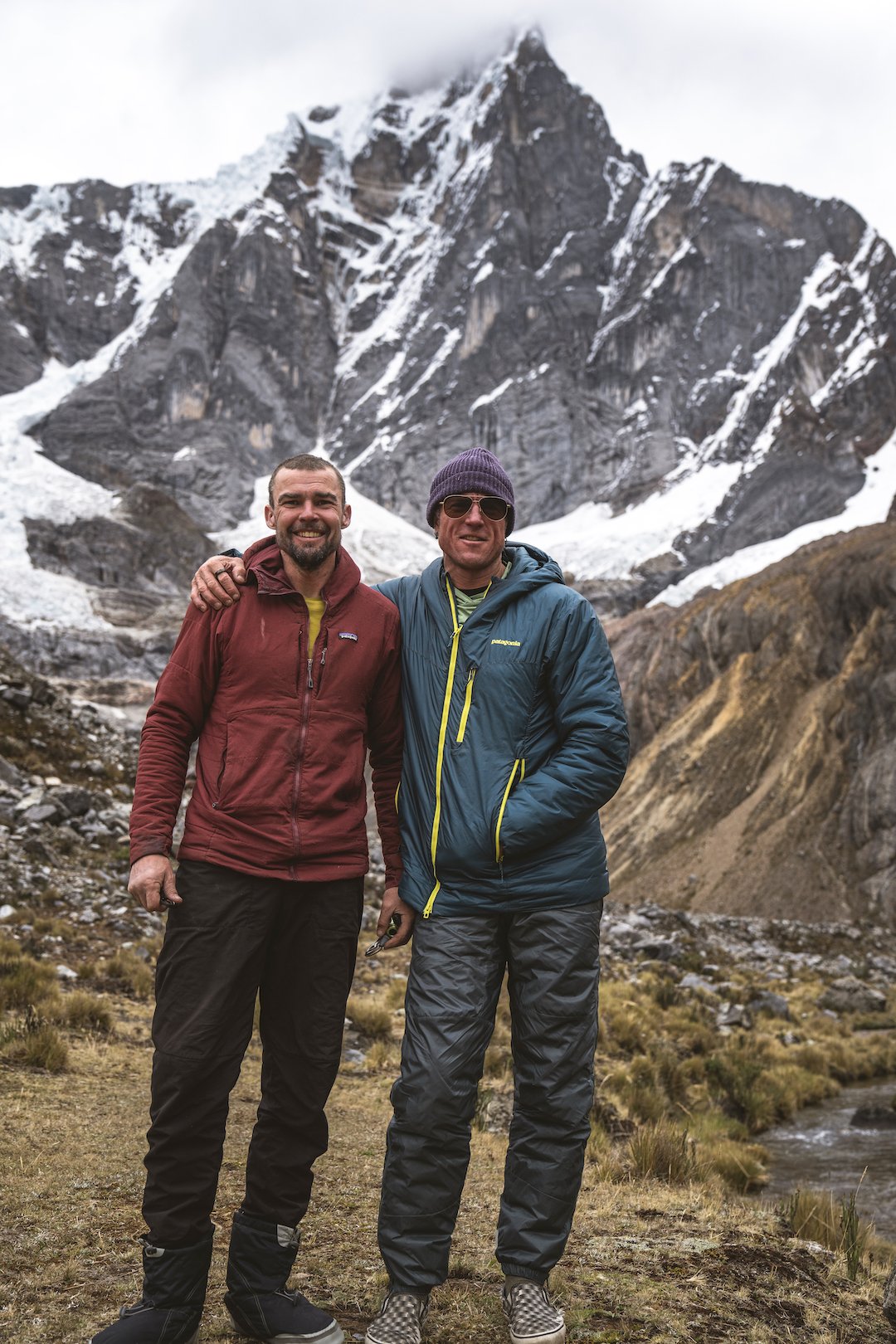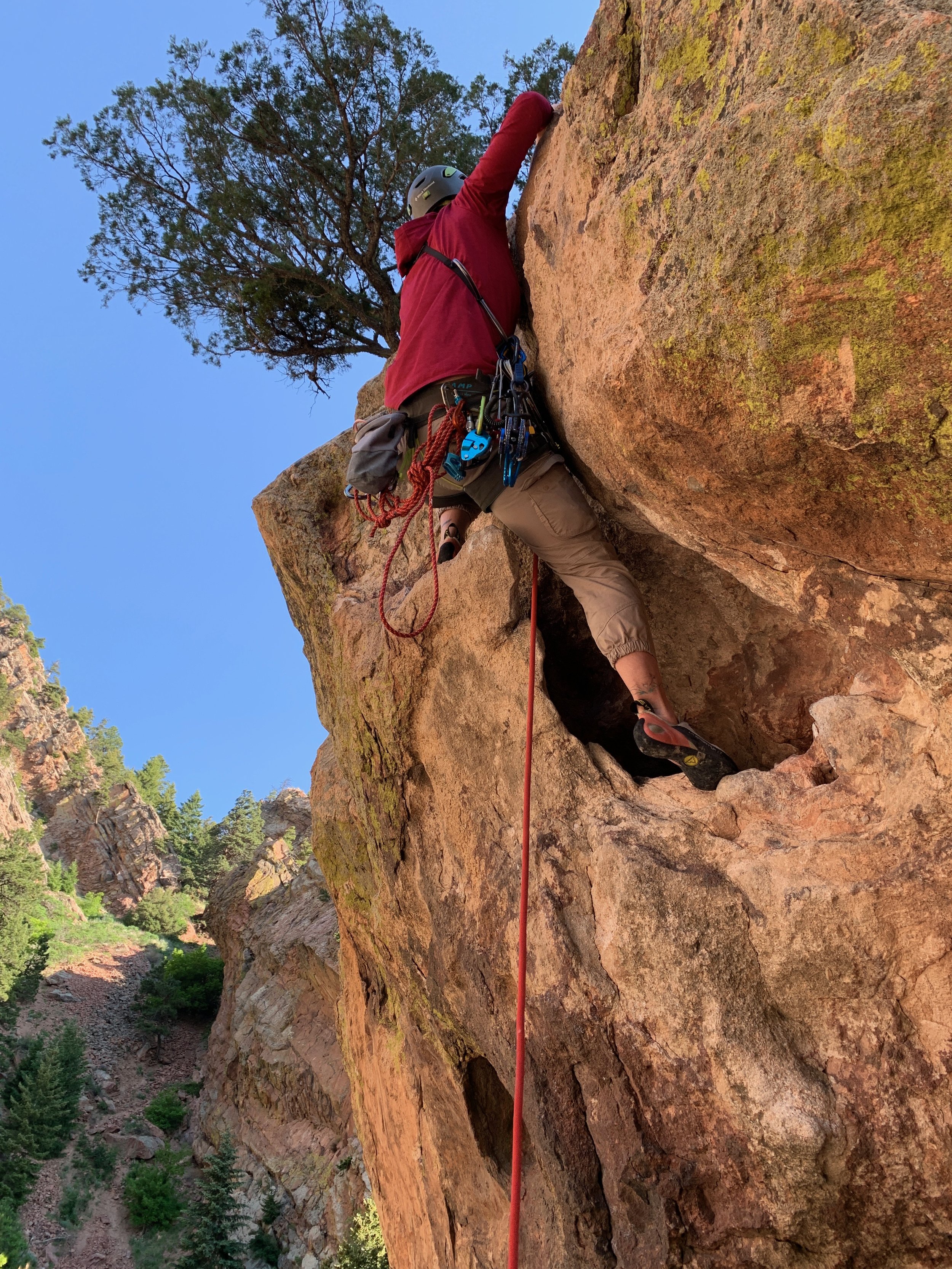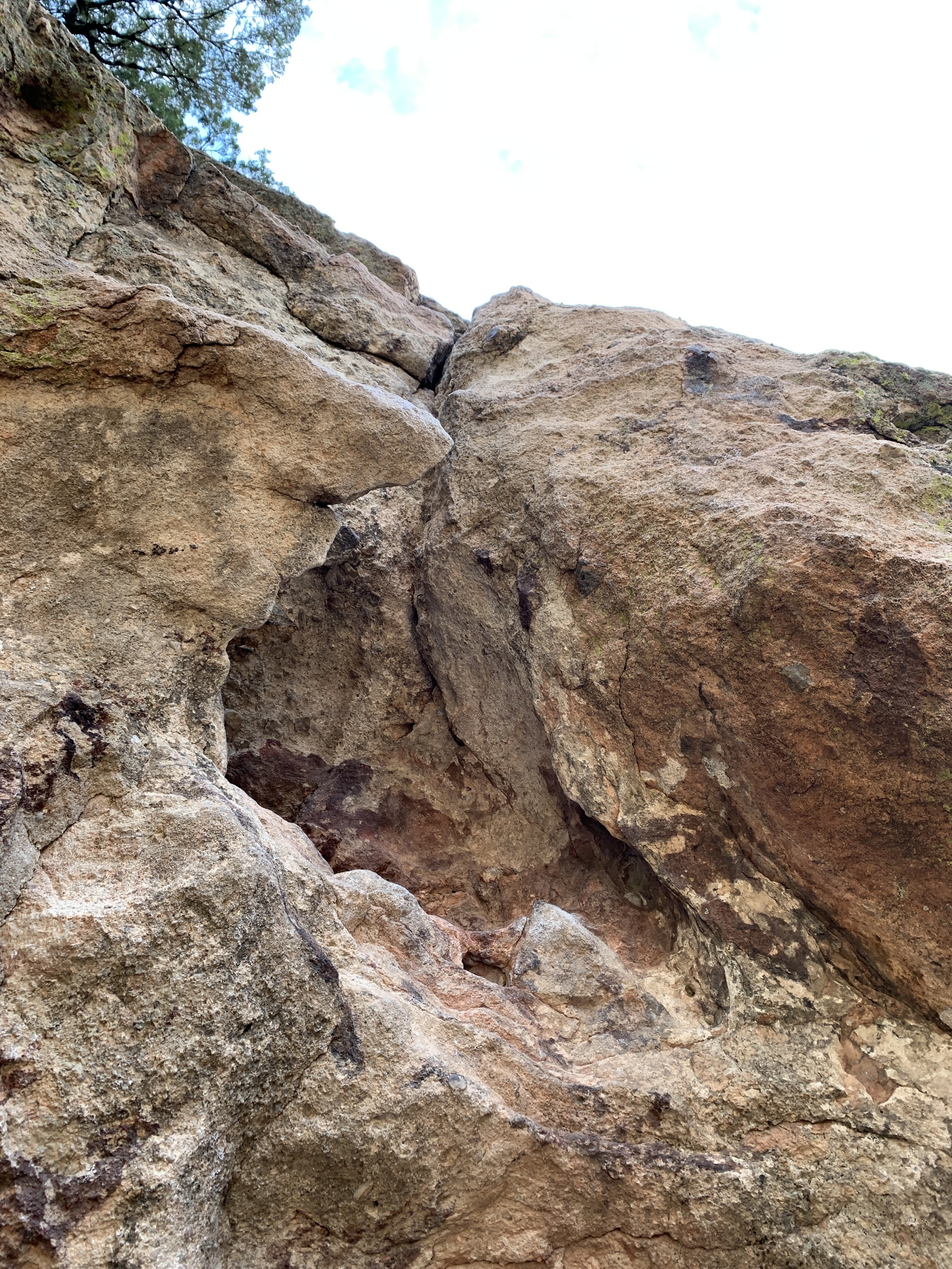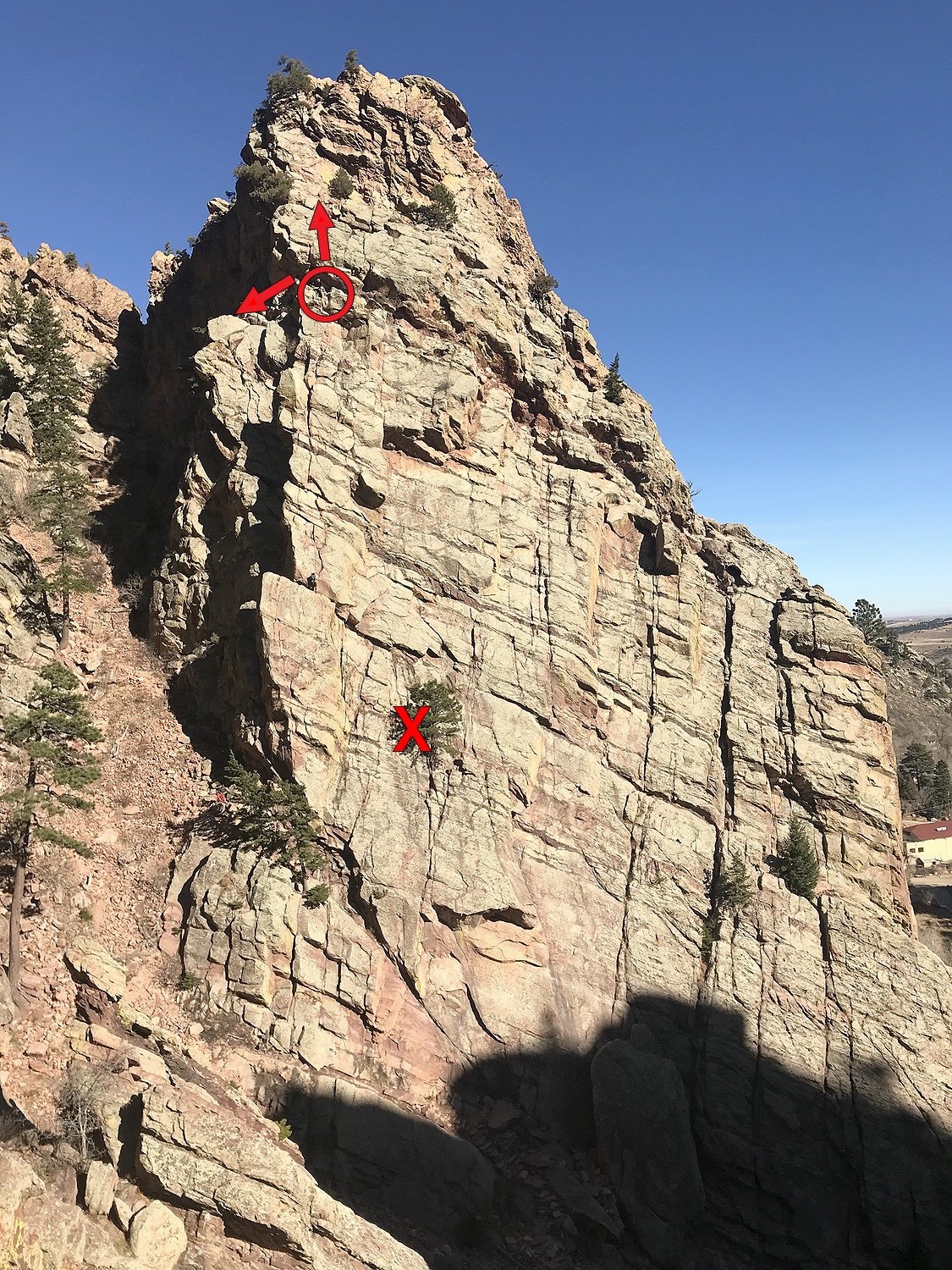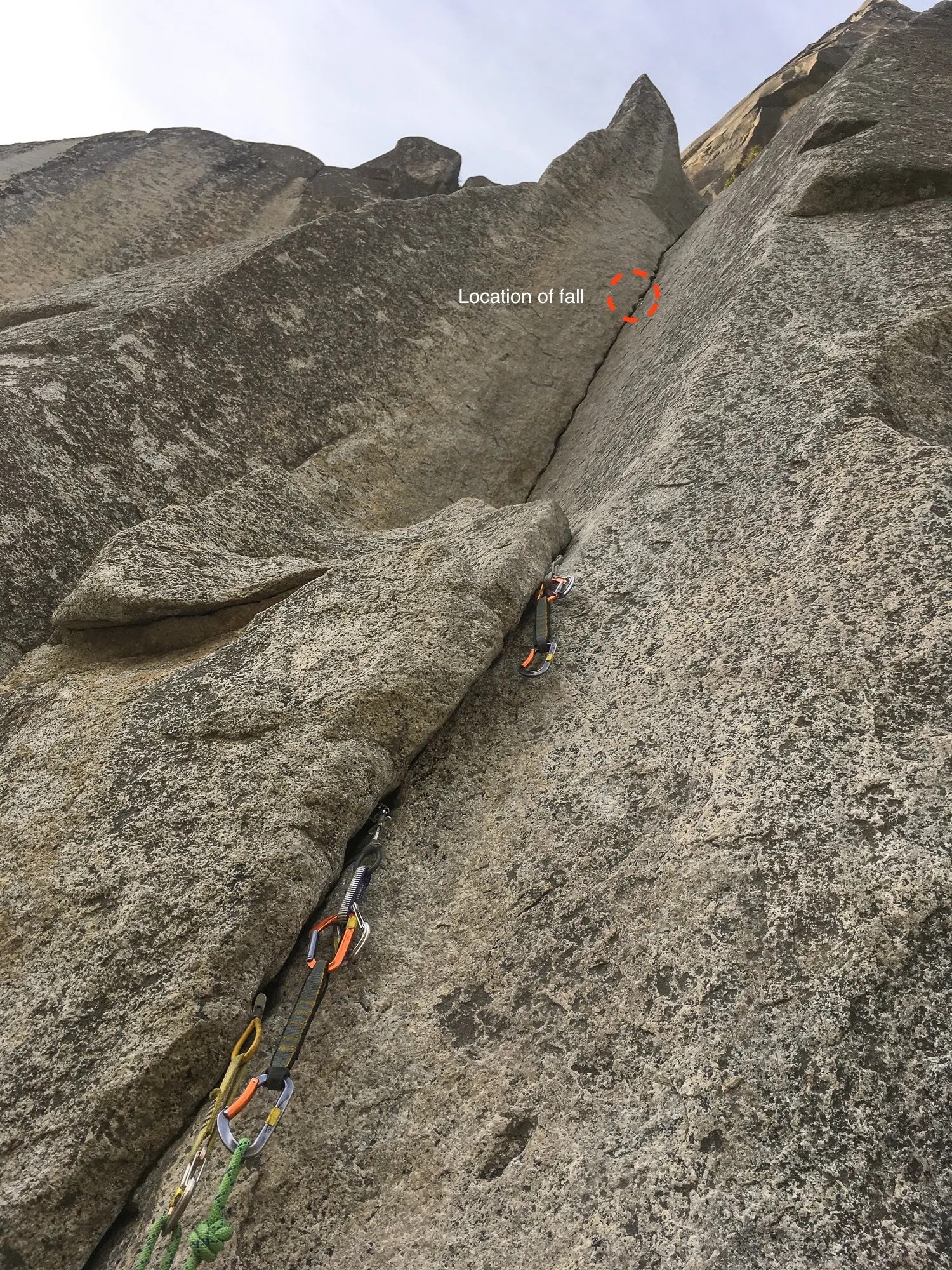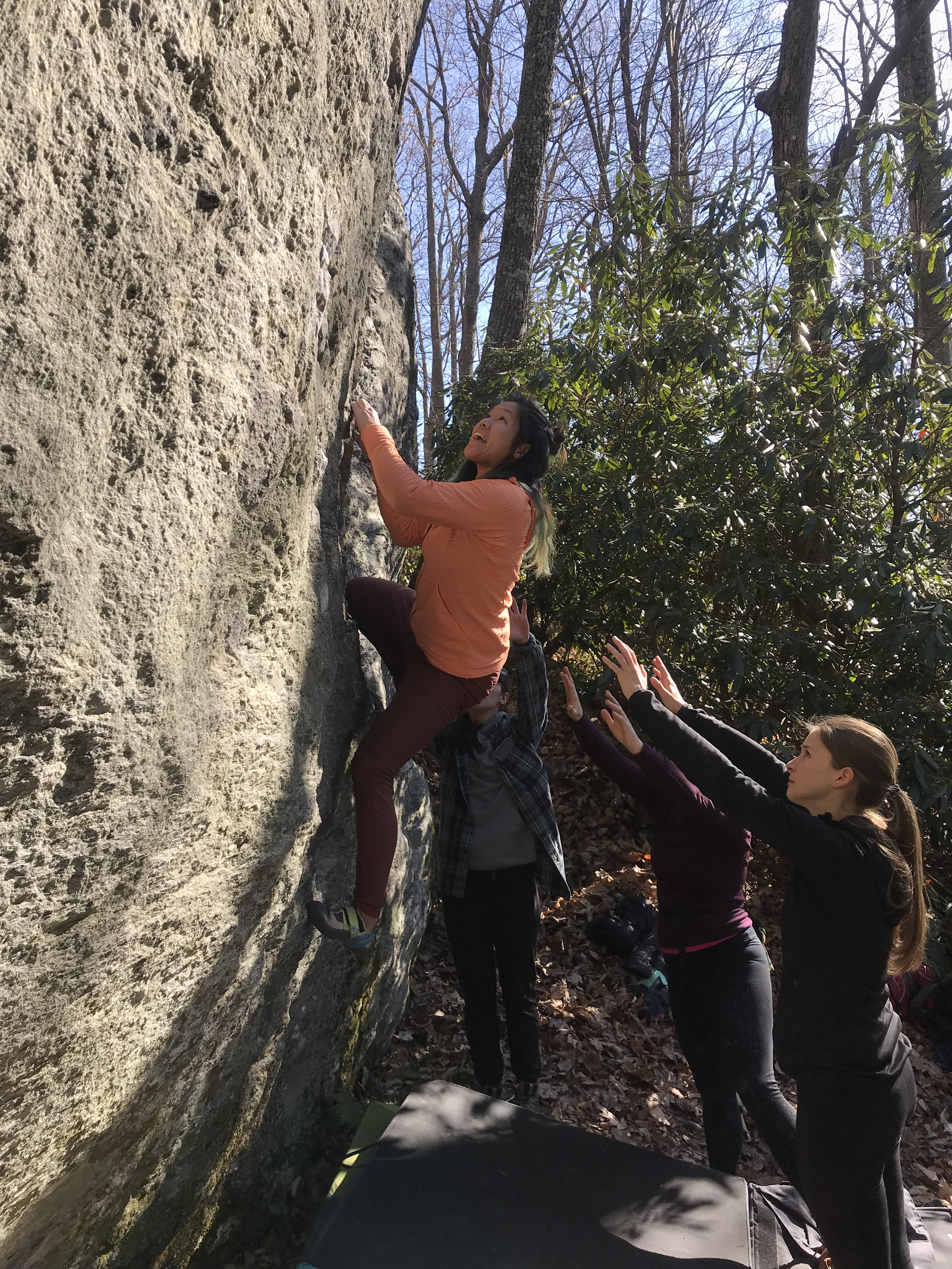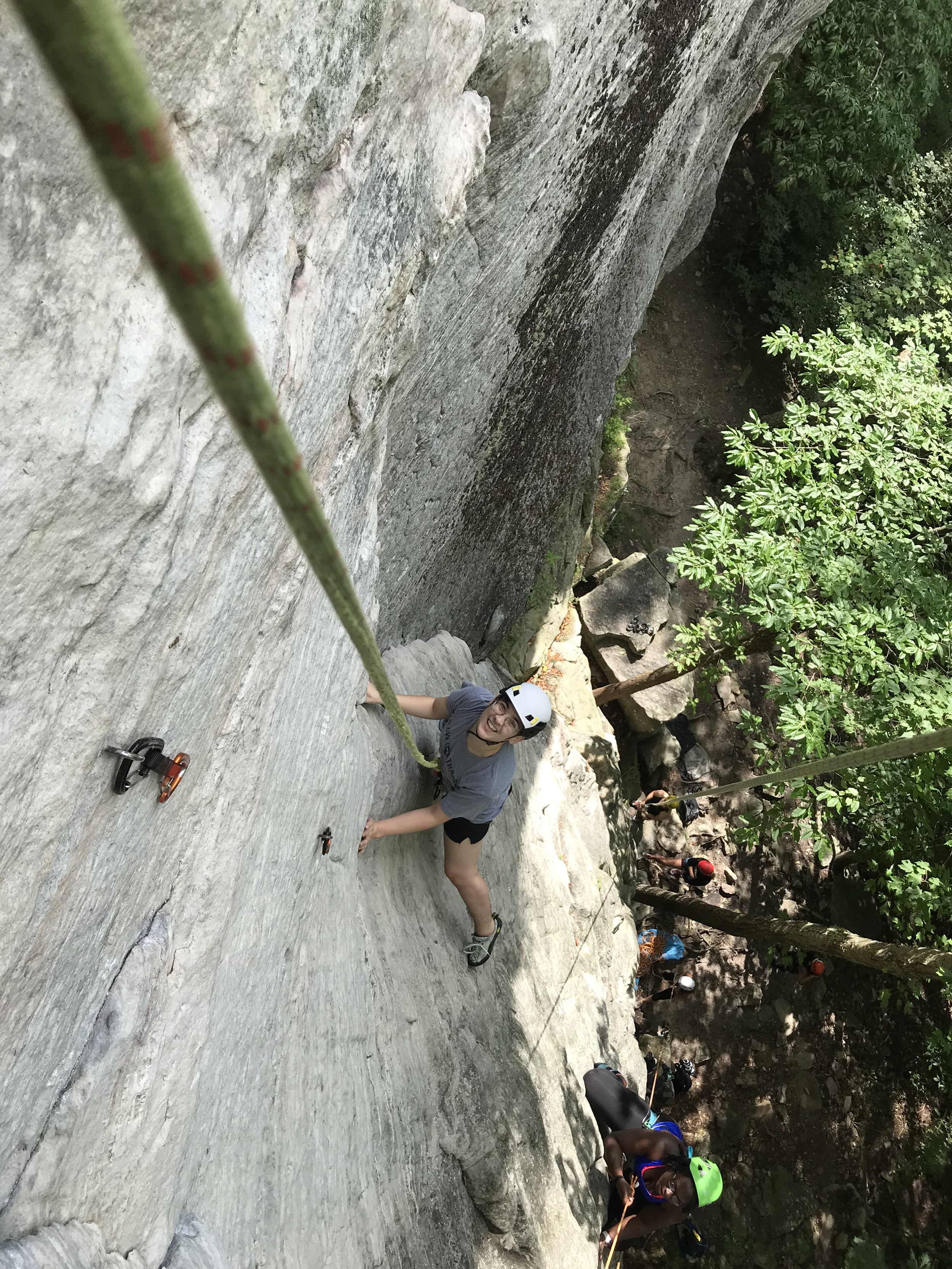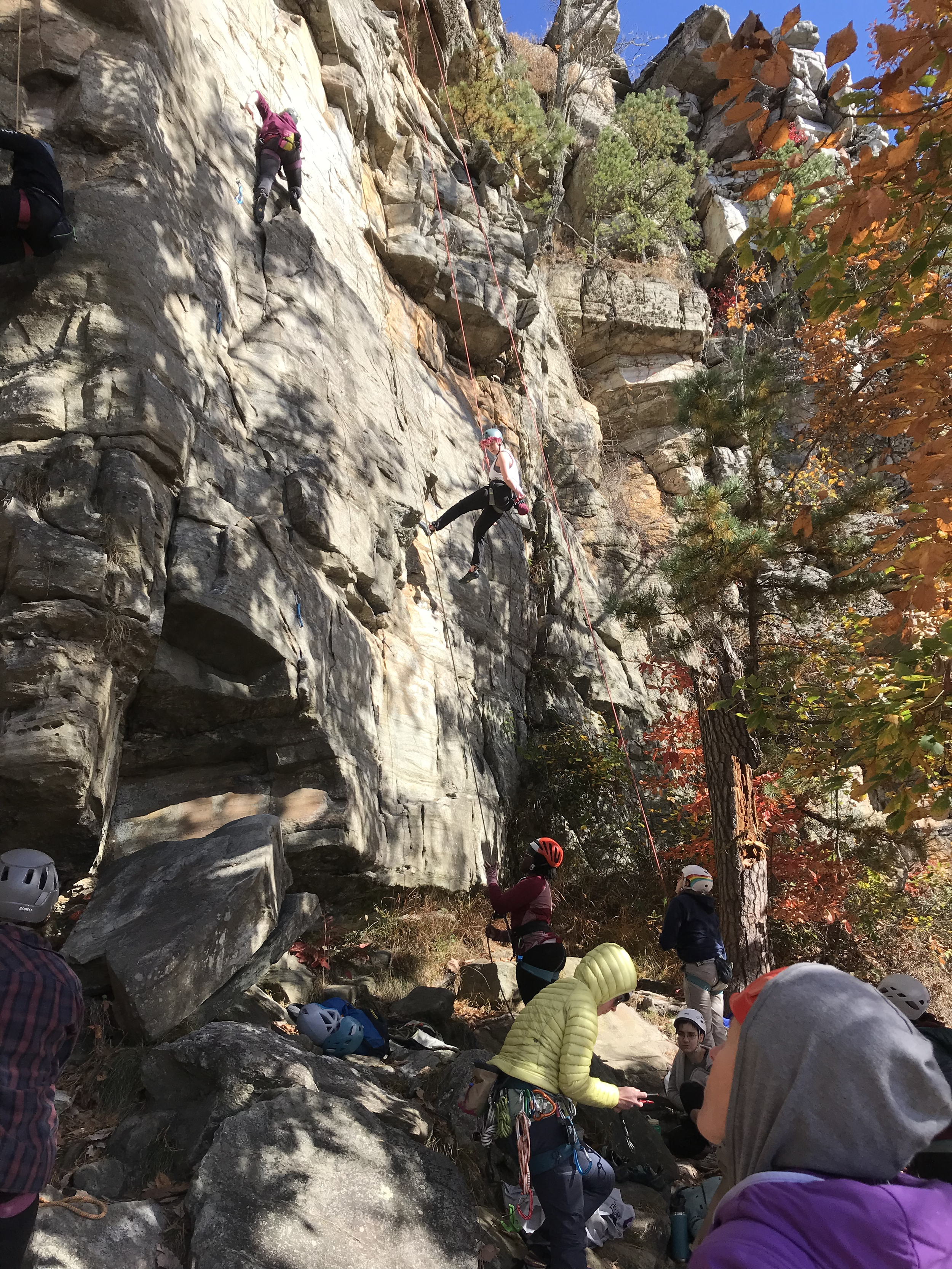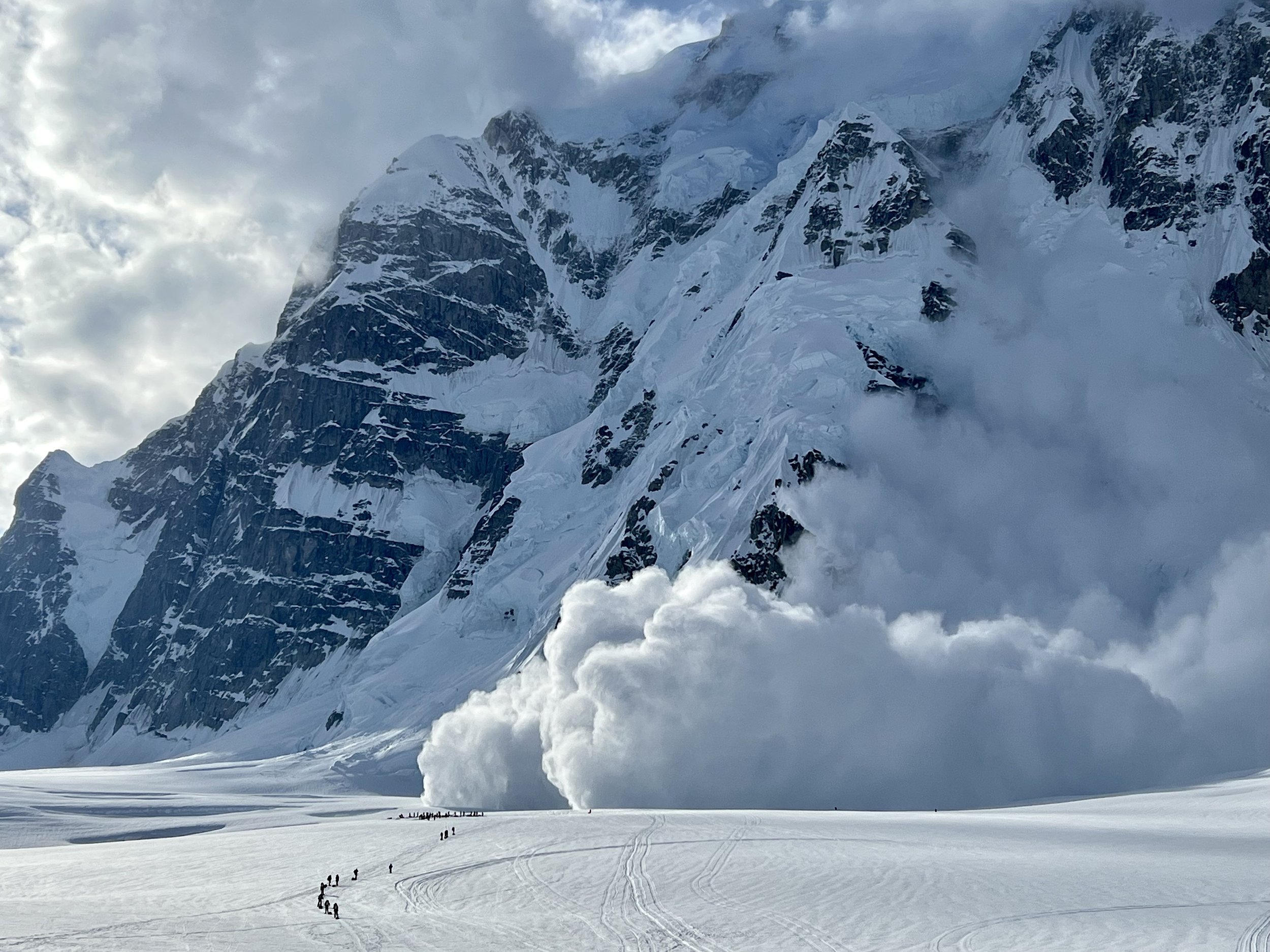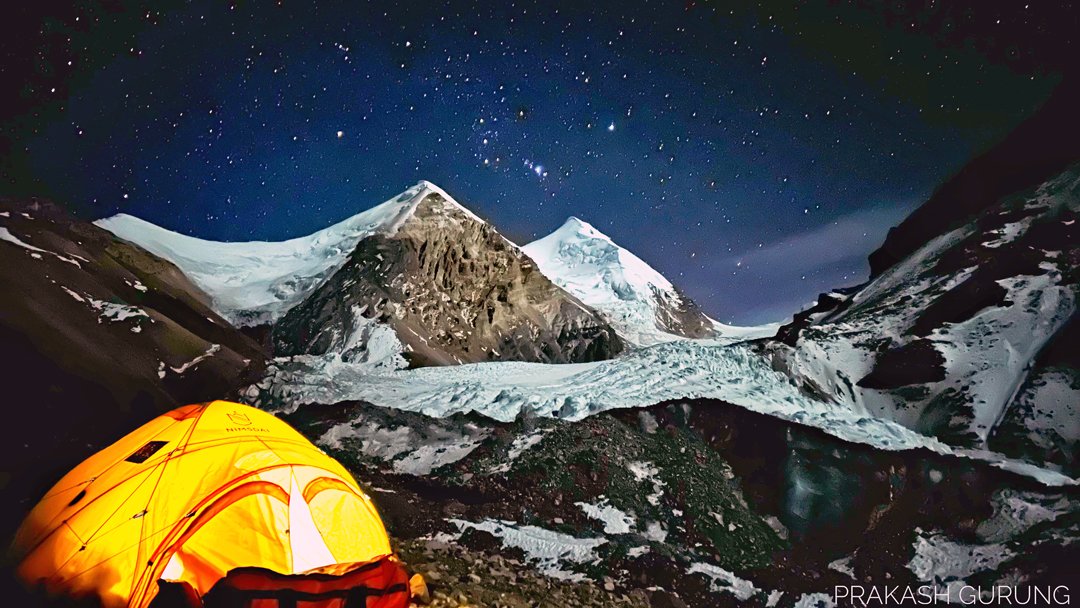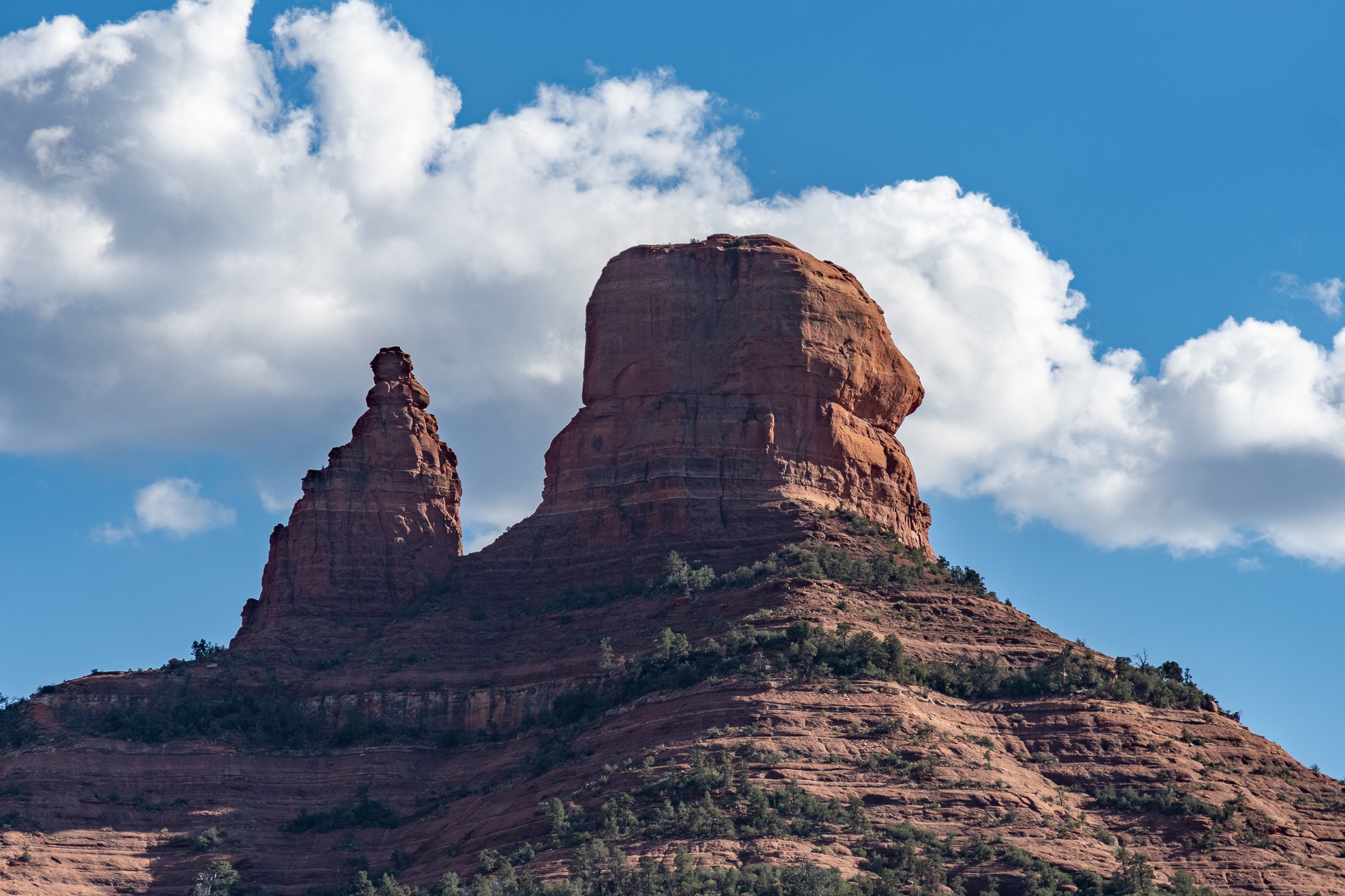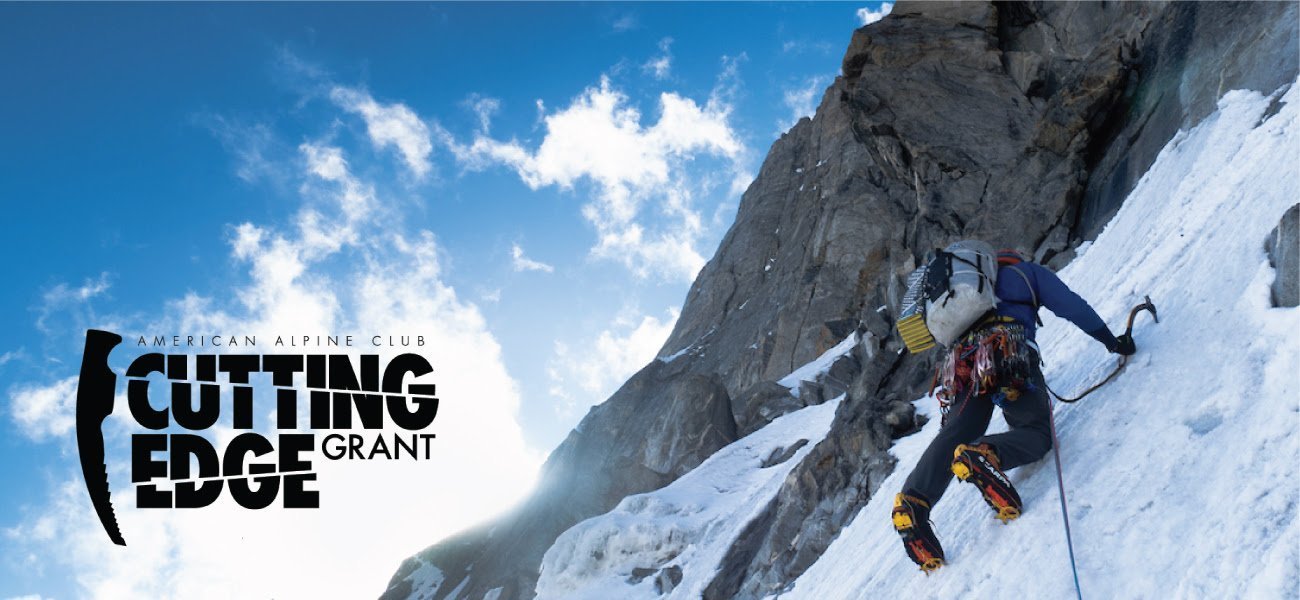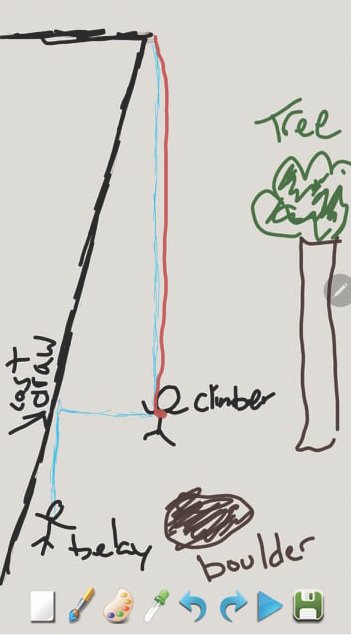THE RUBBERNECKER
Over the last two summers, Nathan Hadley and partners established two very hard new free climbs on the southeast face of South Early Winters Spire, near Washington Pass in the North Cascades. The harder of the routes, which Hadley sent on August 22 this year, is Rubbernecker, a seven-pitch, mixed bolt and gear route with three 5.13 pitches (including a 13+ traditionally protected crack) and a 5.14- bolted pitch. Ace photographer Jeremiah Watt shot Hadley on the route and graciously allowed us to share some images from Rubbernecker here.

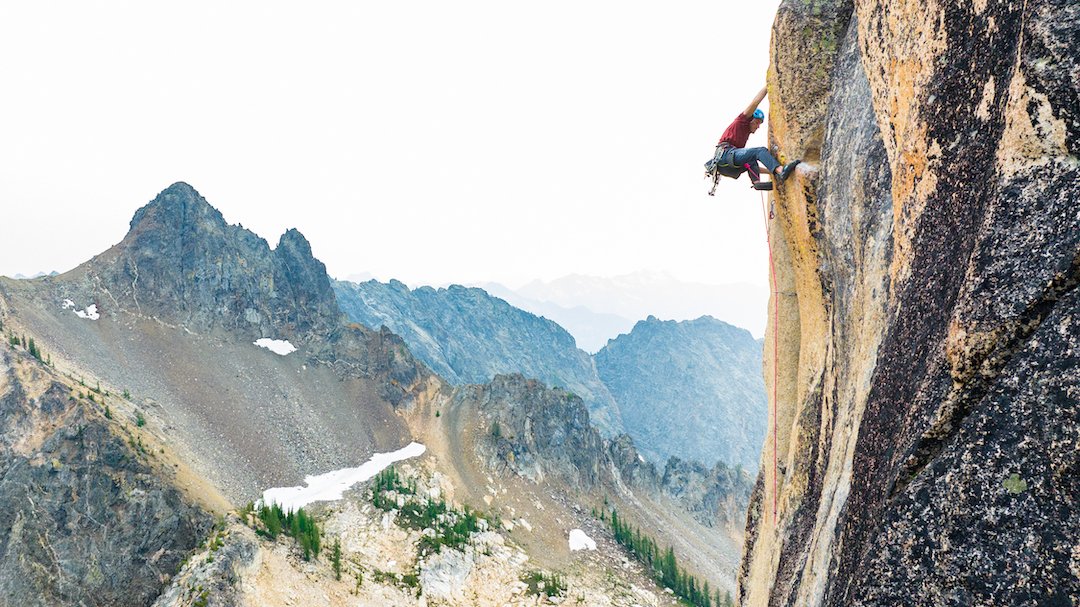
Hadley’s report for AAJ 2023 and more Jeremiah Watt photos are available now at our website. The Rubbernecker? Hadley explains: “I named the route because of the way I and others always stare up at the Washington Pass spires from our car windows.”
CHILEAN GOLD
In the last few years, Sebastian Pelletti has been contributing fascinating AAJ reports from South America, often from little known peaks and ranges. Pelletti, whose mother is Australian and father is Argentinean, first visited Chilean Patagonia in 2015 and fell in love with the small towns and easy access to wild mountains. “During the pandemic, I built a little cabin on the outskirts of Puerto Natales, from where I’m based most of the year,” he says. In his work as a guide and during his free time, he scouts new lines on lesser known walls of Torres del Paine National Park, as well as the surrounding fjordlands. Here are highlights of three reports from AAJ 2022, describing climbs with a variety of South American partners—Pelletti’s full reports are all at the AAJ website.
Grupo La Paz
Grupo La Paz from the north. The full traverse went from right to left. Photo by Hector Diaz.
Pelletti and friends made two trips from Puerto Natales in 2021 and 2022 to a “mystical looking group of three rock towers situated in the southern Cordillera Riesco. The towers are seldom seen, and we had only a few photographs for reference.” After a six-hour boat ride across Canal Santa María, they first linked the east and central towers of the Grupo La Paz, making the first ascent of Aguja Central. Still drawn to the towers, Pelletti returned in February with two other friends and traversed the entire massif, including the western peak, first climbed by Yvon Chouinard and Jim Donini in 1988. Read the report.
Cuerno Este
On January 8, 2022, Pelletti, Pepe Jurado (Ecuador), and Romano Marcotti (Chile) pulled off a rare feat: the first ascent of a significant summit in Torres del Paine. Cuerno Este looks like some kind of mad layer cake, with golden granite below and dark, loose metamorphic rock frosting the top. Their 600-meter route, Vacaciones Metamorficas, shared some pitches with an earlier route that didn’t quite reach the summit, and it went all free at 5.11-. Read the Cuerno Este report here.
Cerro San Luis
Bushwhacking through dense forest to reach Cerro San Luis; it took eight hours to travel five kilometers. Photo by Nicolás “Nico” Secul.
Last August, Camilo Pedreros, Nicolás “Nico” Secul (both from Chile), and Pelletti kayaked west from Estancia Perales across Fiordo Última Esperanza to reach the northern Cordón Monumento Moore. On the second day of this adventure, they bushwhacked “through very dense subpolar forest, at times progressing on our hands and knees. It took approximately eight hours to travel five kilometers to the base of the broad south face of Cerro San Luis,” their objective. The made the second known ascent of the peak and named their route Memoria Kawésqar (750m, AI4 80°), “in honor of the Kawésqar, an indigenous people who navigated these fjords by canoes thousands of years ago.” Read the report here.
Seba Pelletti is already sure to have at least one report in the 2023 AAJ: This past summer, he and friends from South America climbed several new routes in the Vampire Spires of Canada’s Northwest Territories.
MINI-EPIC
Prolific Sierra climbers Vitaliy Musiyenko, Brian Prince, and Brandon Thau joined forces on a new line at the Spring Lake Wall last summer. Establishing the route required two trips into the mountains (about four hours of steep hiking for each approach). For the second trip, Musiyenko writes in AAJ 2022, “I brought along a cheap backpack covered with images from the popular show Friends, which I’d bought from Walmart with the intention of using it as a lightweight haul bag. However, the pack lasted only half a pitch of hauling before exploding. All of our extra cams, headlamps, water, and food fell to the talus field. The only logical solution was for me to hike out, drive home, and grab the extra rack…and a real haul pack. I didn’t get much sleep but was back at the base of the wall at 8 o’clock the next morning.” The new route is Friends (8 pitches, 5.11b).
The Line is the newsletter of the American Alpine Journal (AAJ), emailed to more than 45,000 climbers each month. Find the archive of past editions here. Interested in supporting this online publication? Contact Billy Dixon for opportunities. Suggestions? Email us: [email protected].


